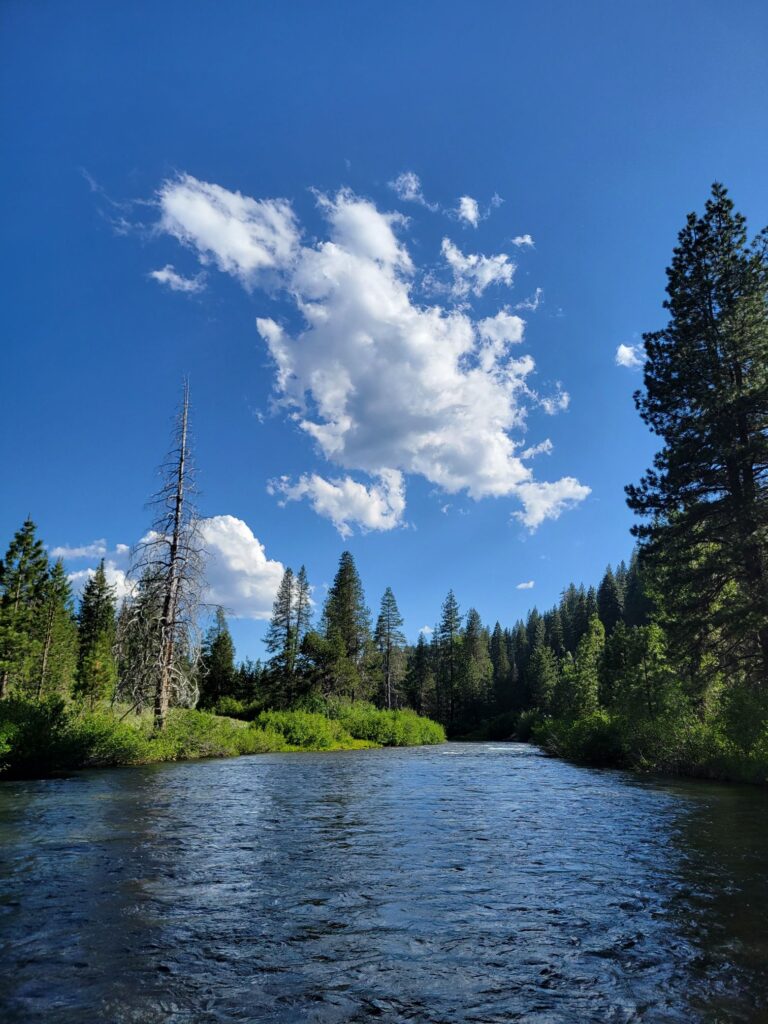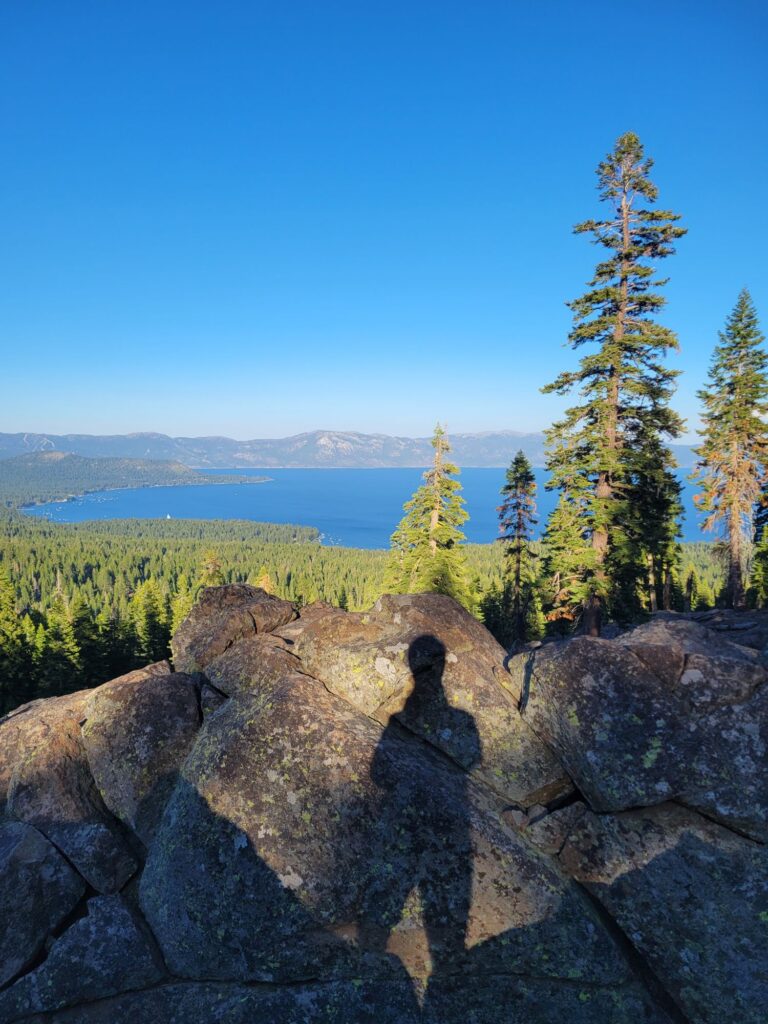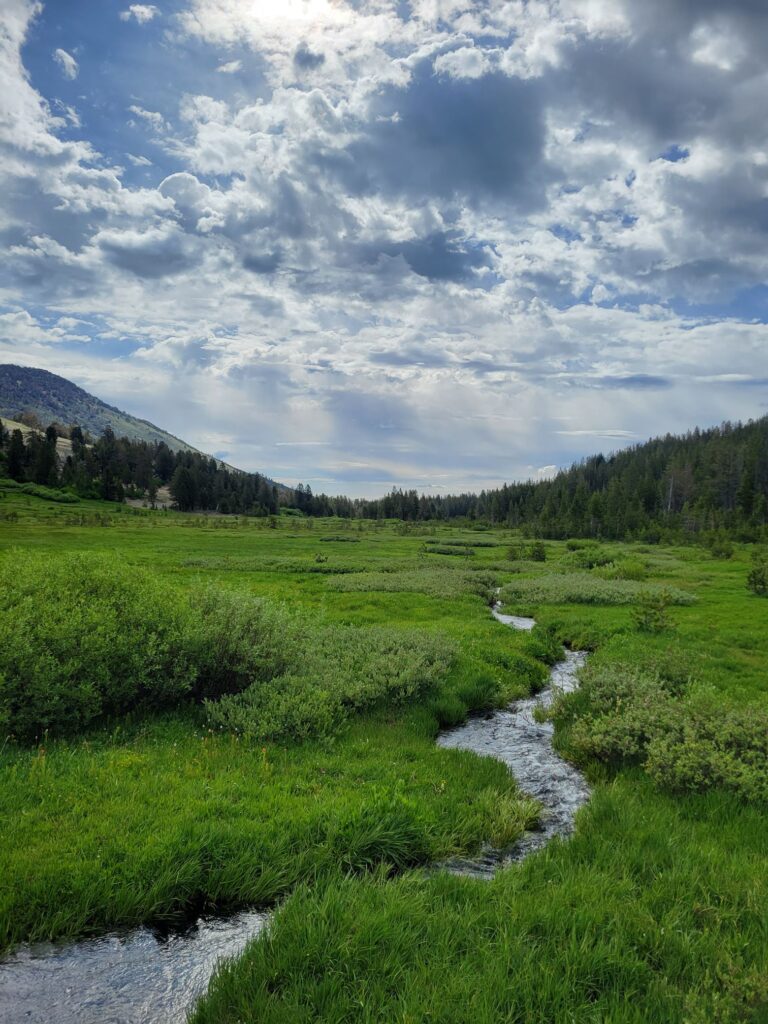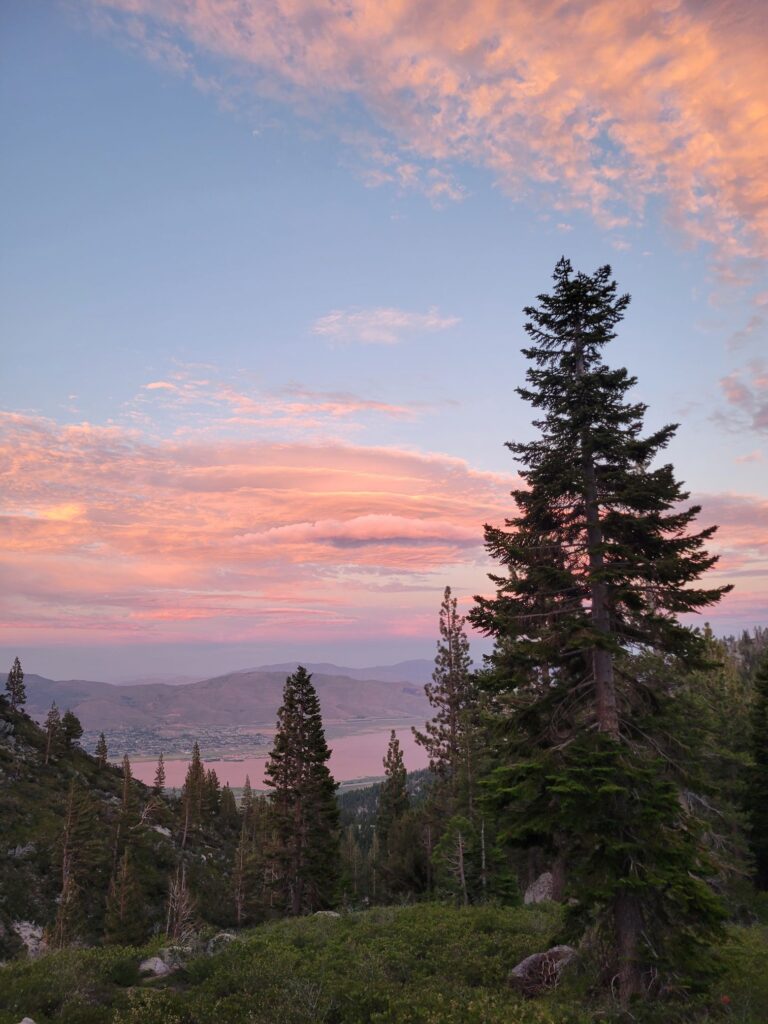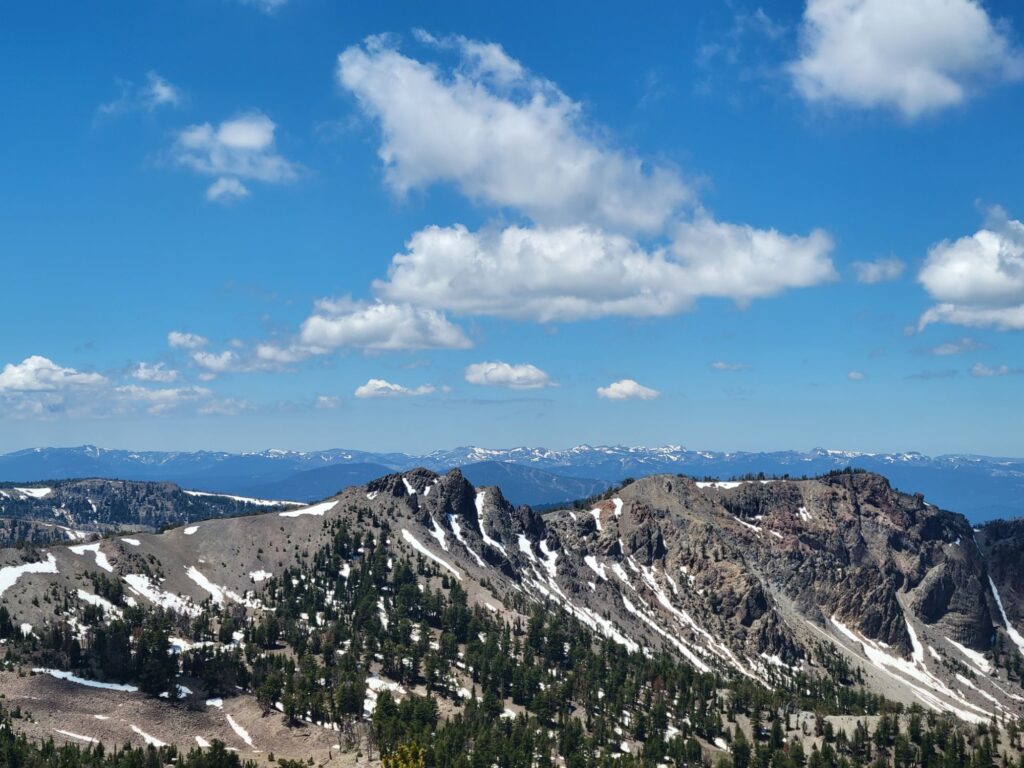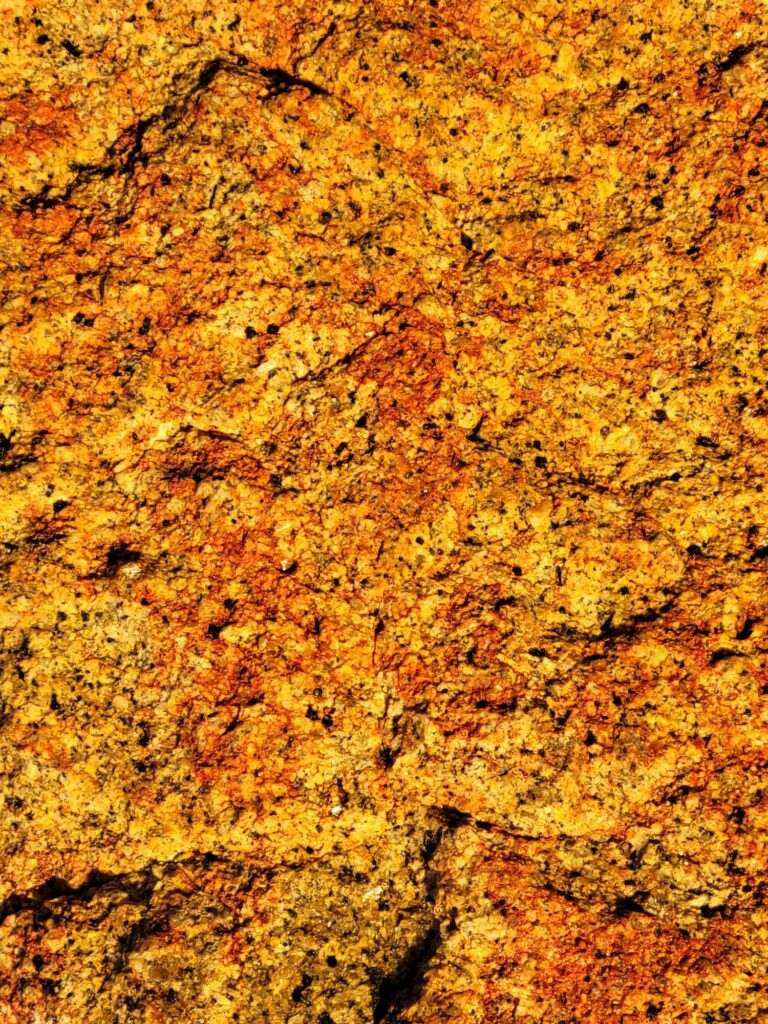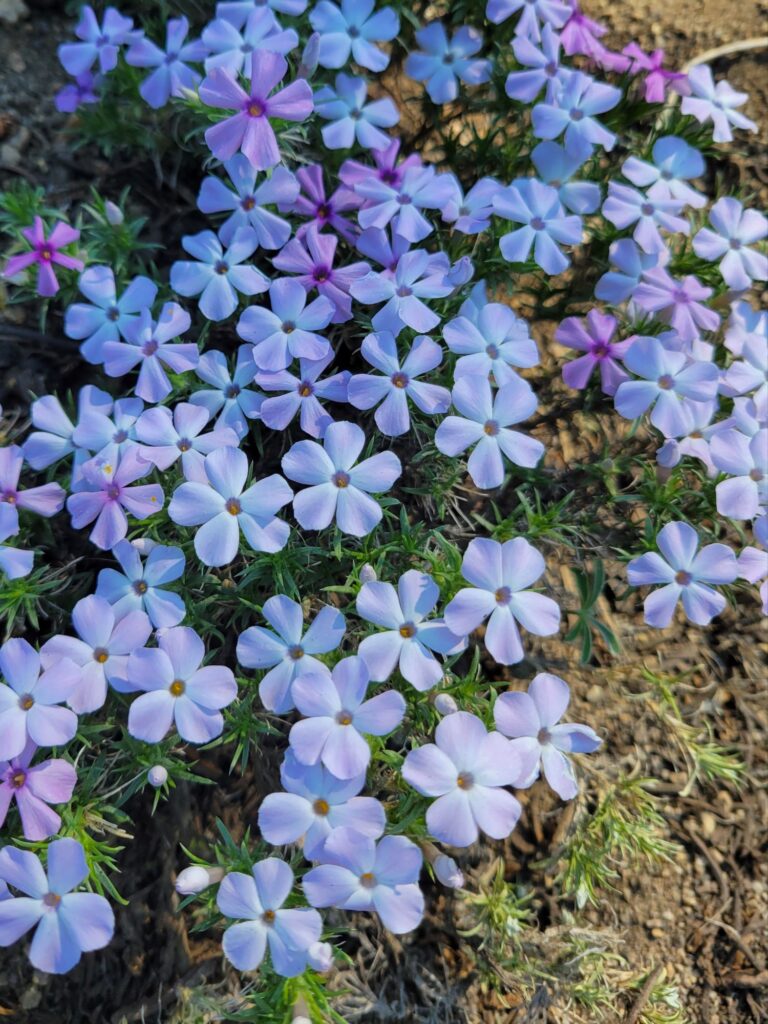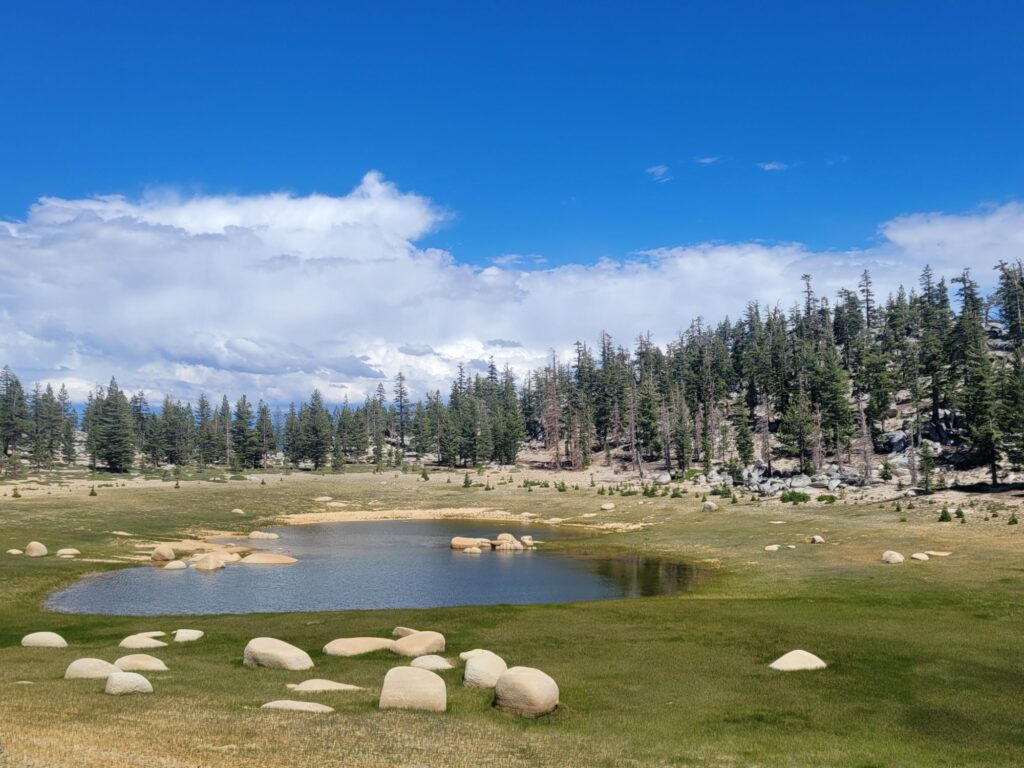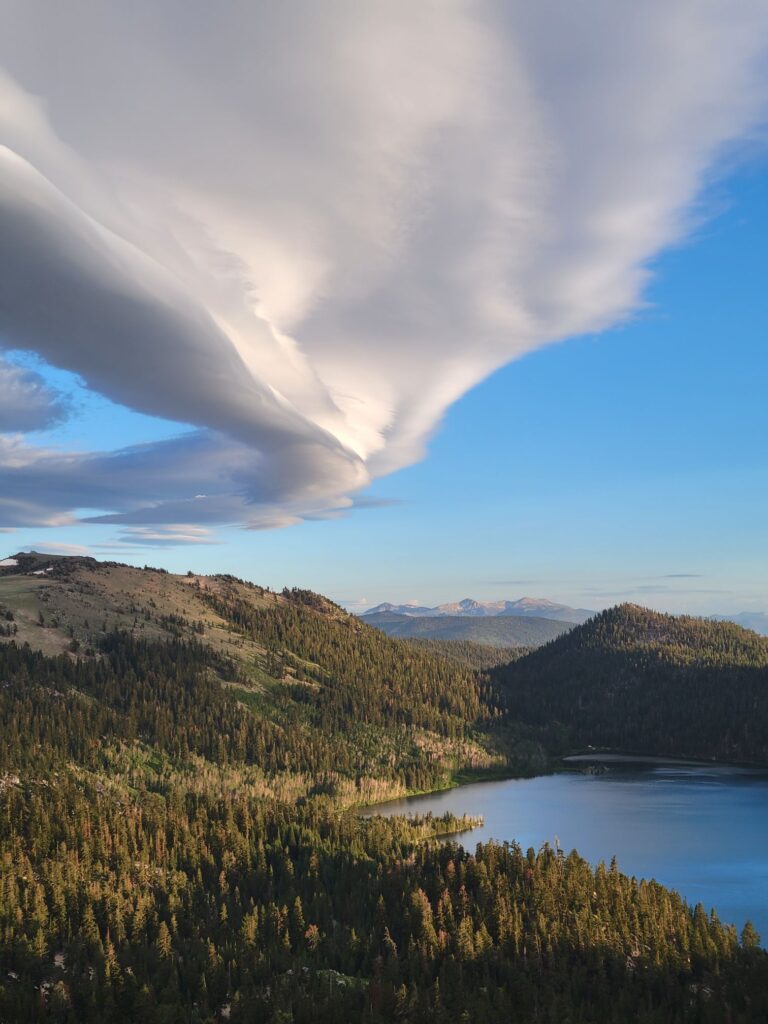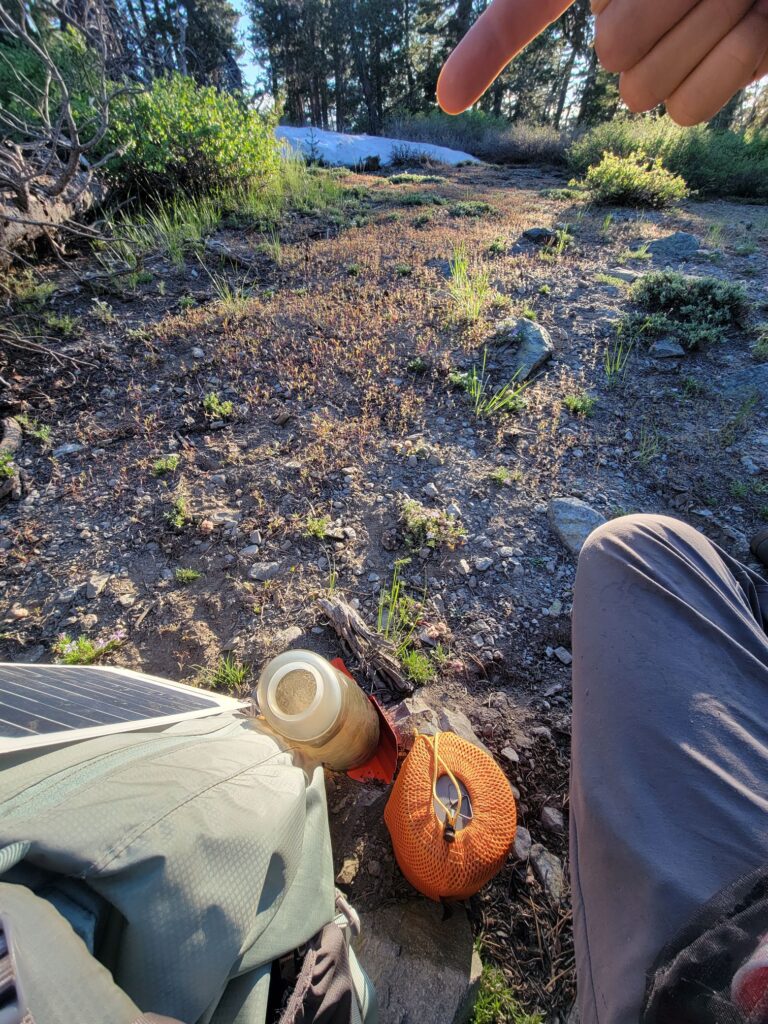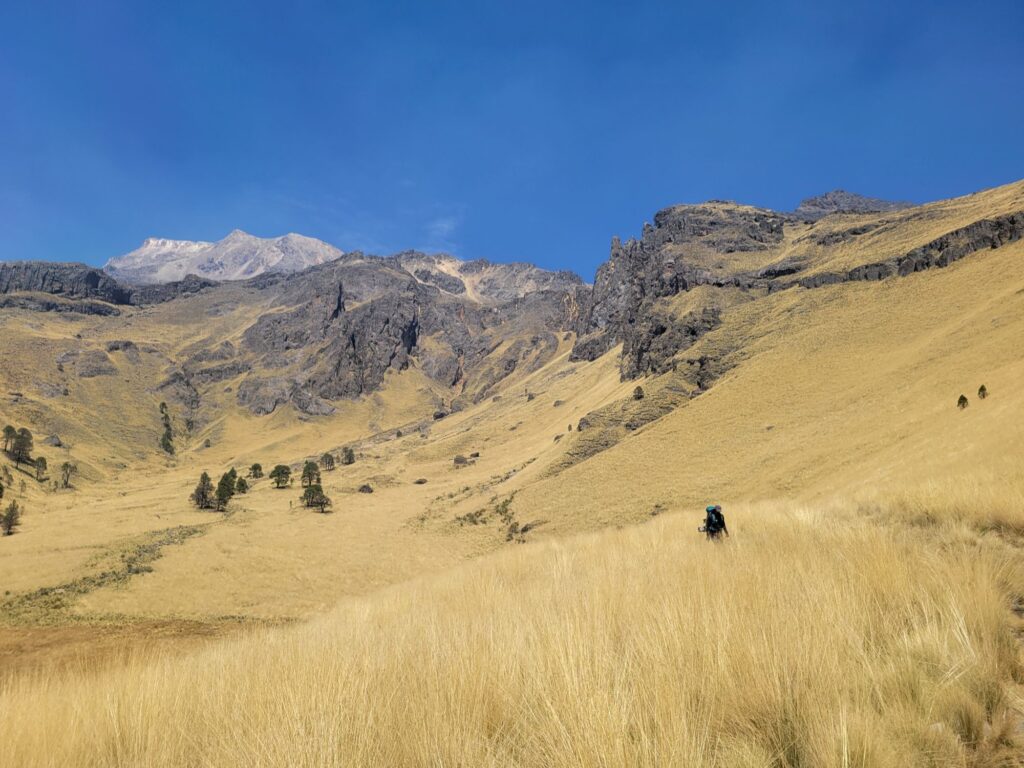
Último paisaje de esta ruta mítica, sin camino marcado y en terreno muy rudo, que quería hacer hace tiempo. Cumplida en 2 días para 25 km con la nueva pero excelente compañía de Pablo.
Volvimos a la Sierra Gorda en febrero con @tecnochamana y @tetera_tropipunk, esta vez en coche.
Aprovechamos para visitar lugares complementarios a los que cruce caminando en diciembre: el amanecer en Cuatro Palos, las cascadas del Chuveje, la presa de Jalpan, la misión de Landa de Matamoros, el jardín surrealista de Edward James en Xilitla, la cueva de Puente de Dios y el nacimento de Huichihuayán.
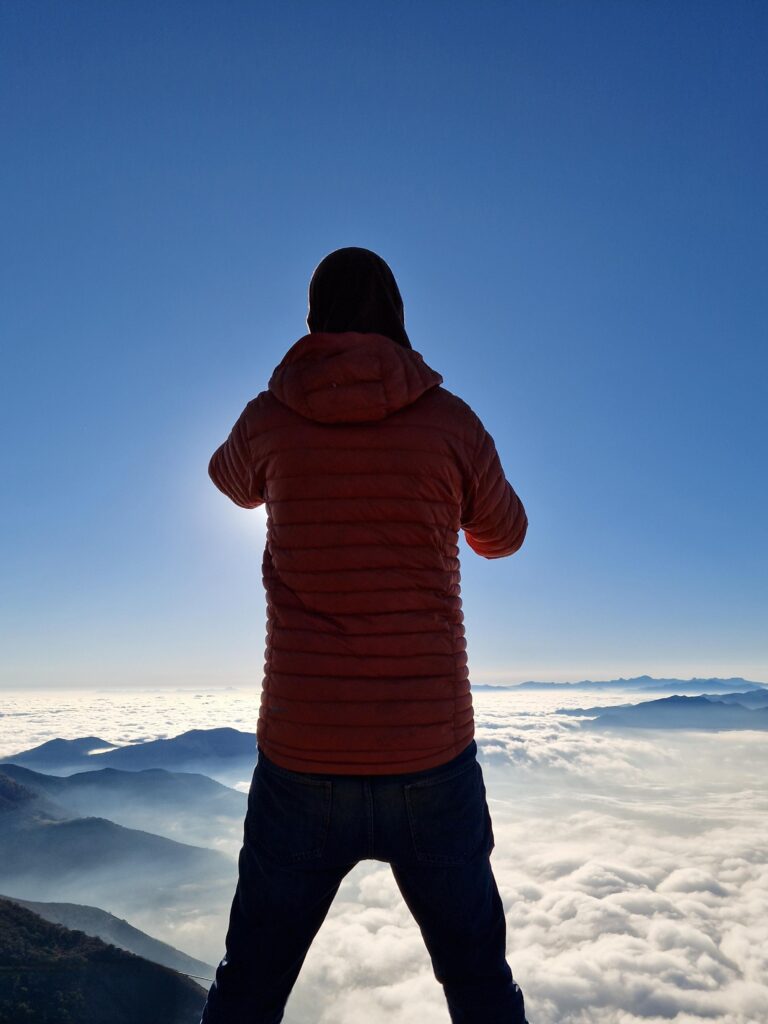
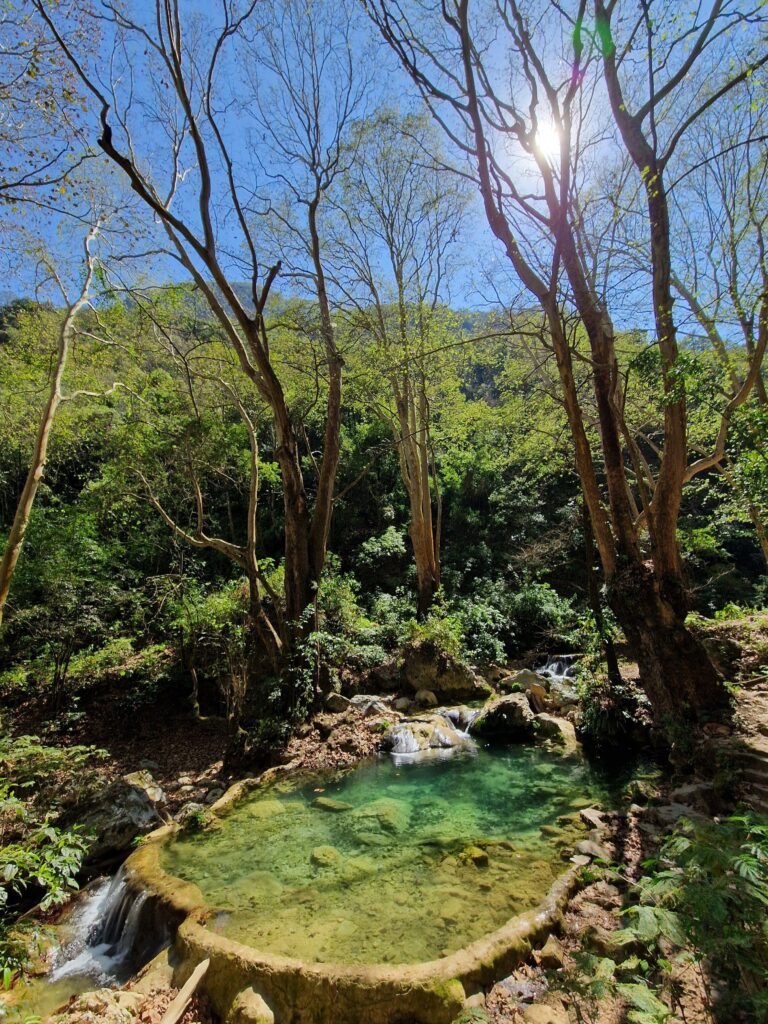
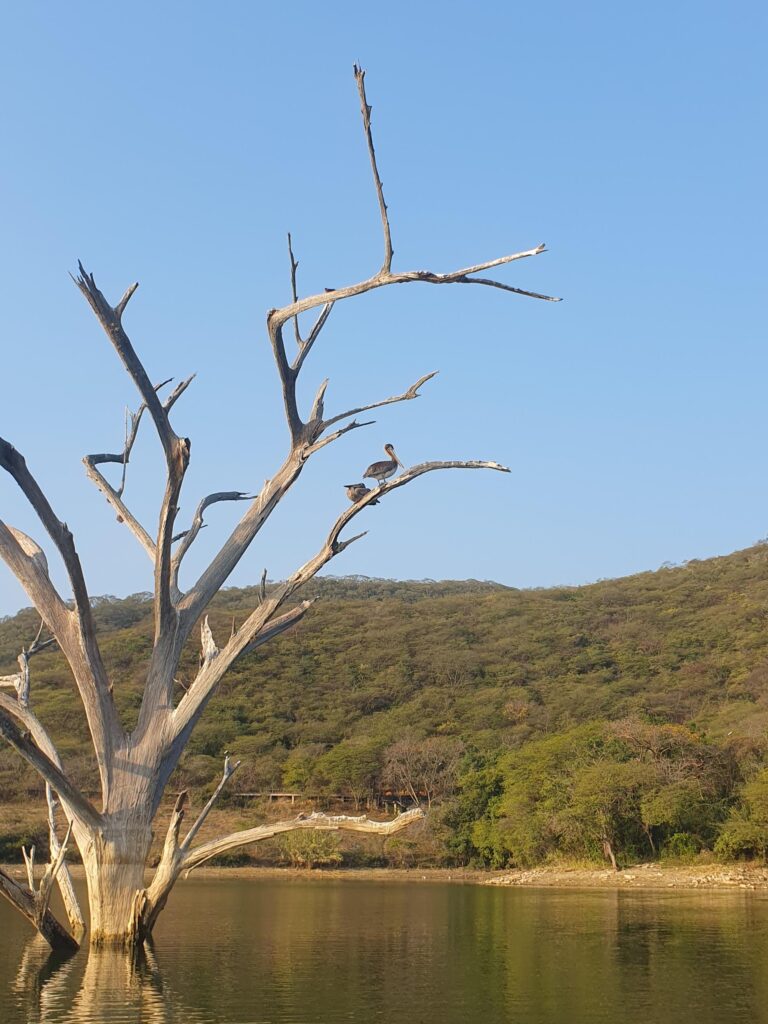
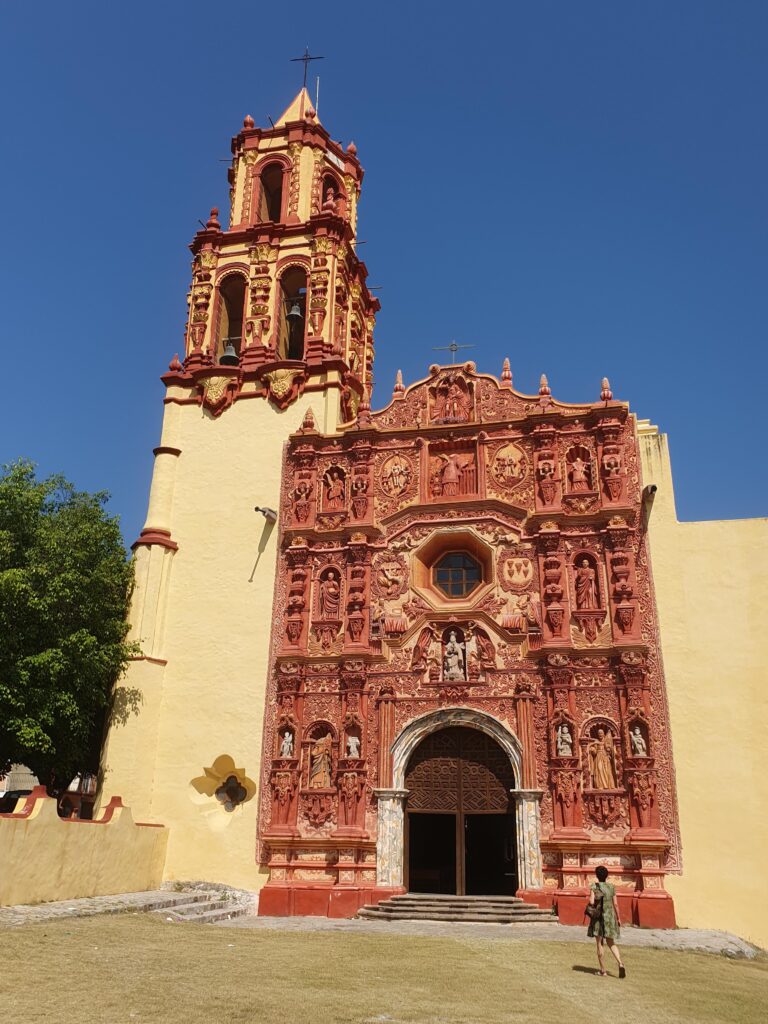


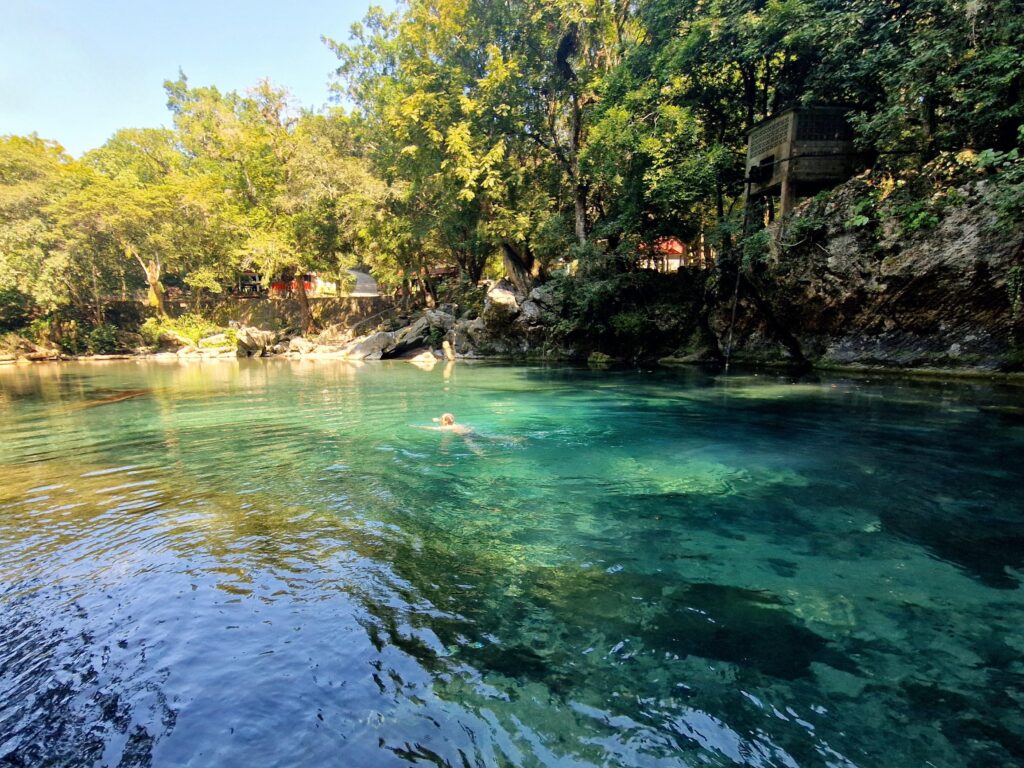
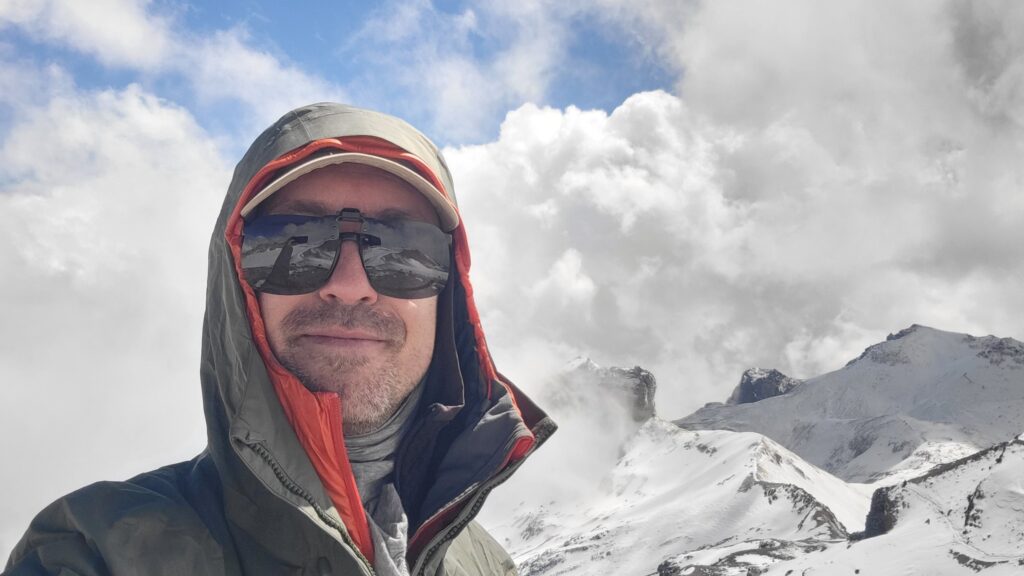
Aproveché un finde de semana de 3 días y las recientes nevadas para realizar mi mejor ruta en los volcanes hasta el momento, pasando por todos mis lugares favoritos del parque.
Primer dia: bus hasta Amecameca y combi hasta el Paso de Cortes. Noche en el Refugio de los Cien.
Segundo día: cumbre sin desvelar (5230 m), bajada del Ayoloco por la nieve y navegación GPS entre nubes hasta los manantiales de Nahualac.
Tercer día: desayuno en la laguna Nahualac y bajada por Nexcolango y la Cascada de los Diamantes hasta San Rafael.
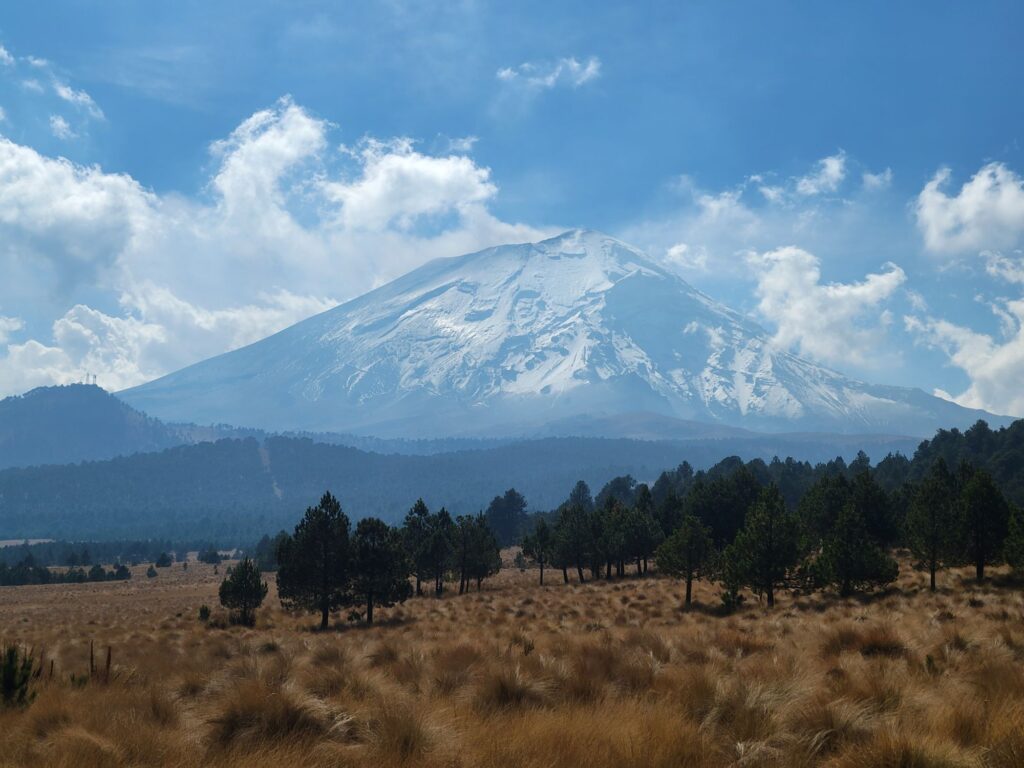
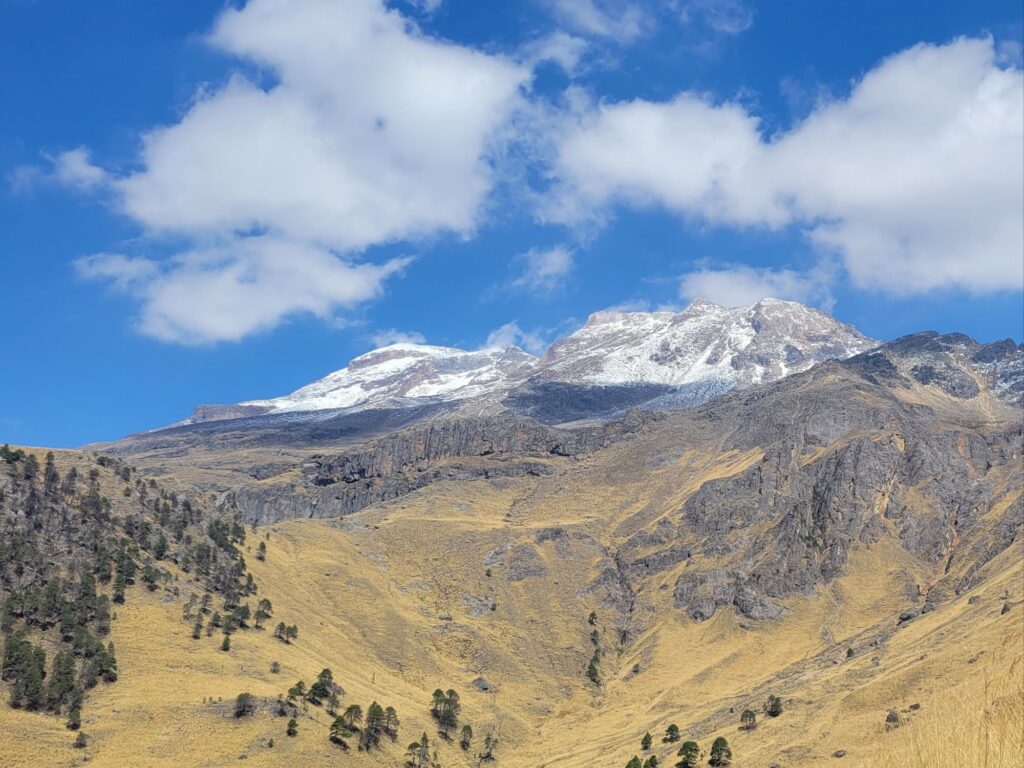
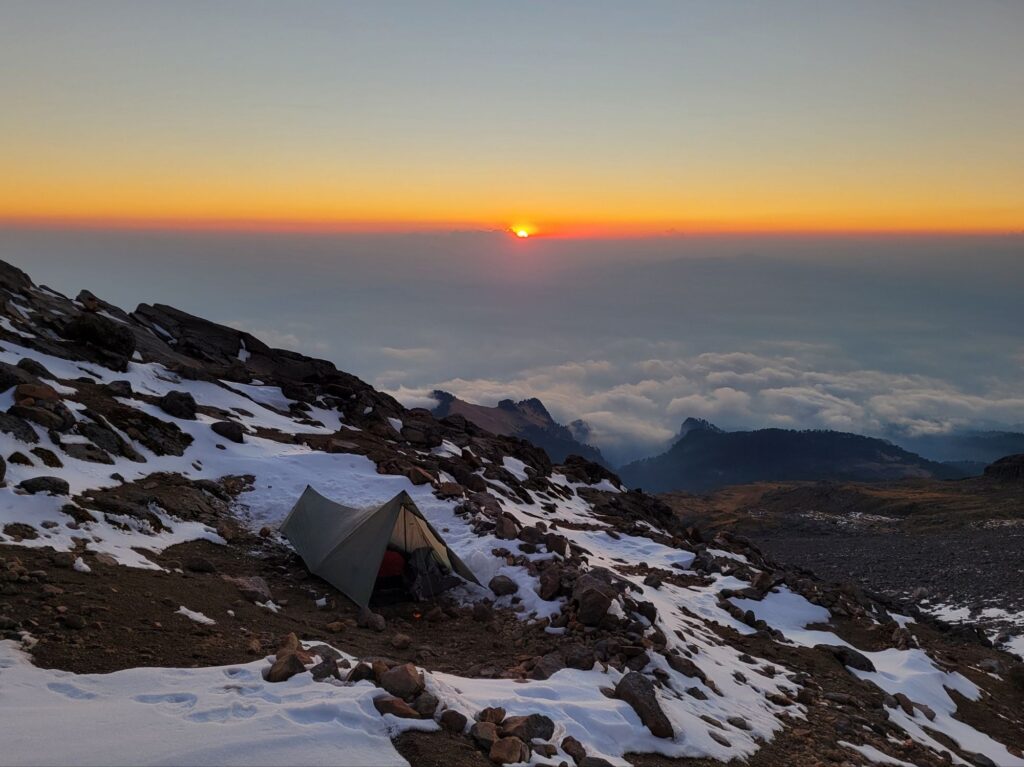
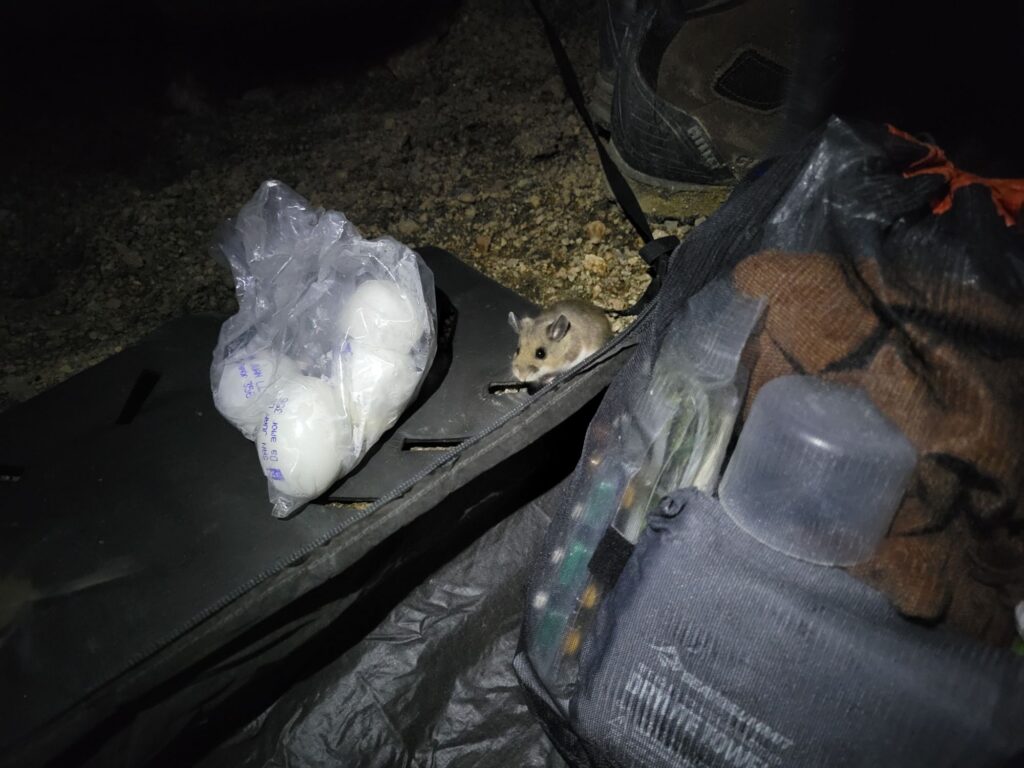
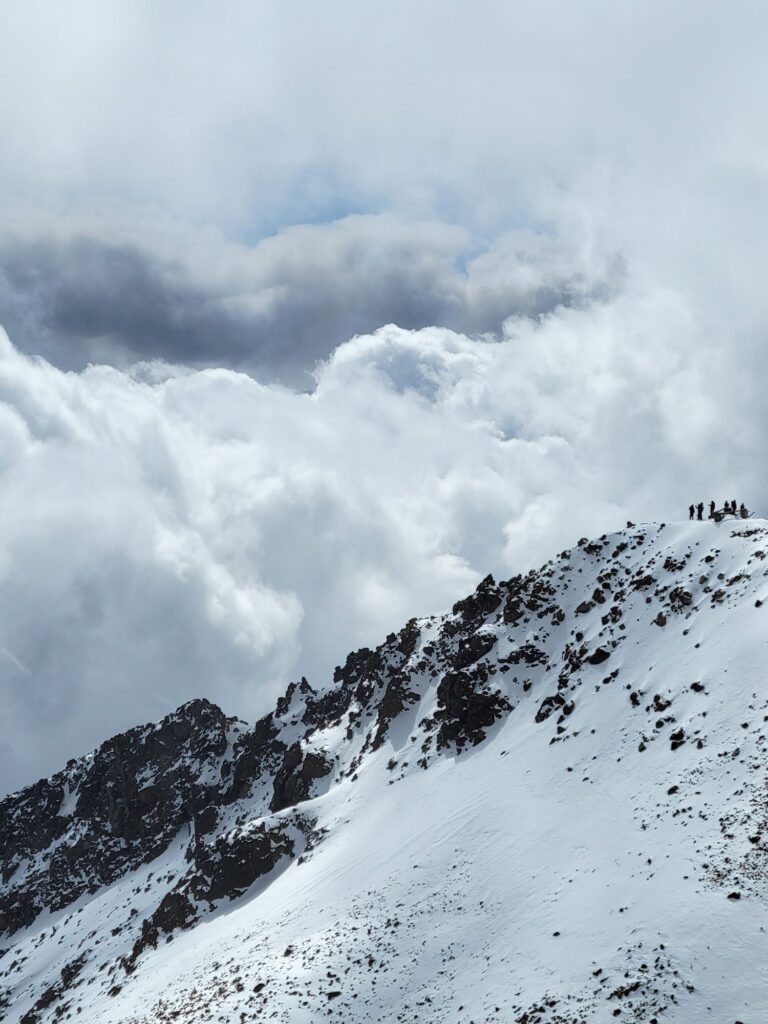
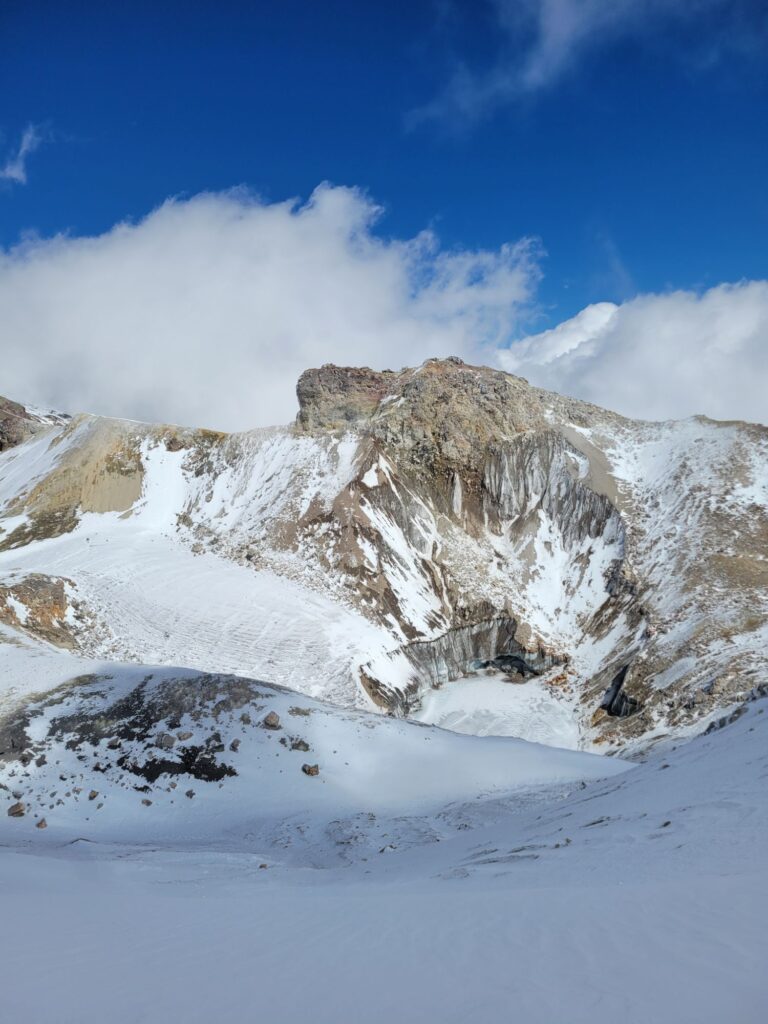
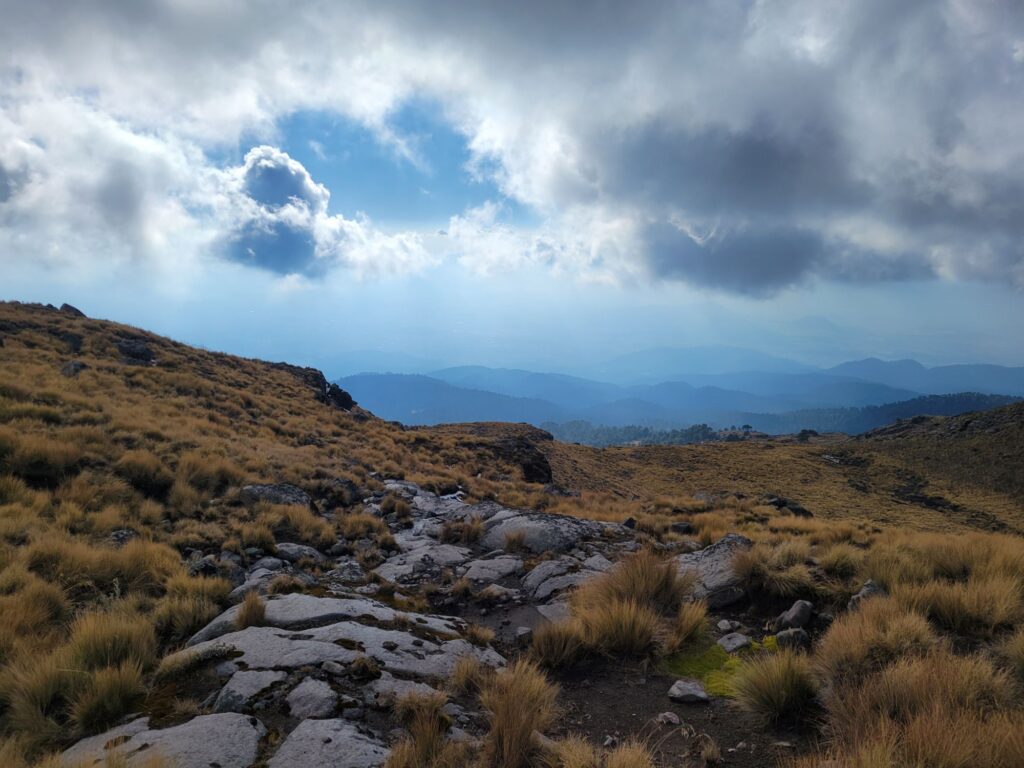
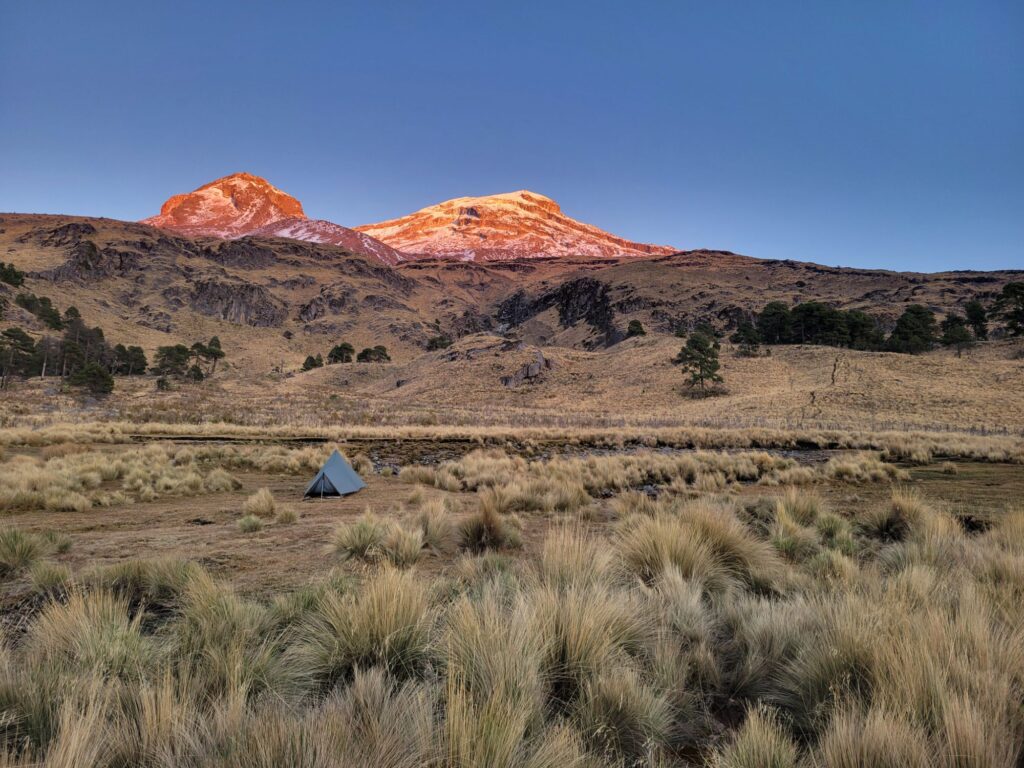
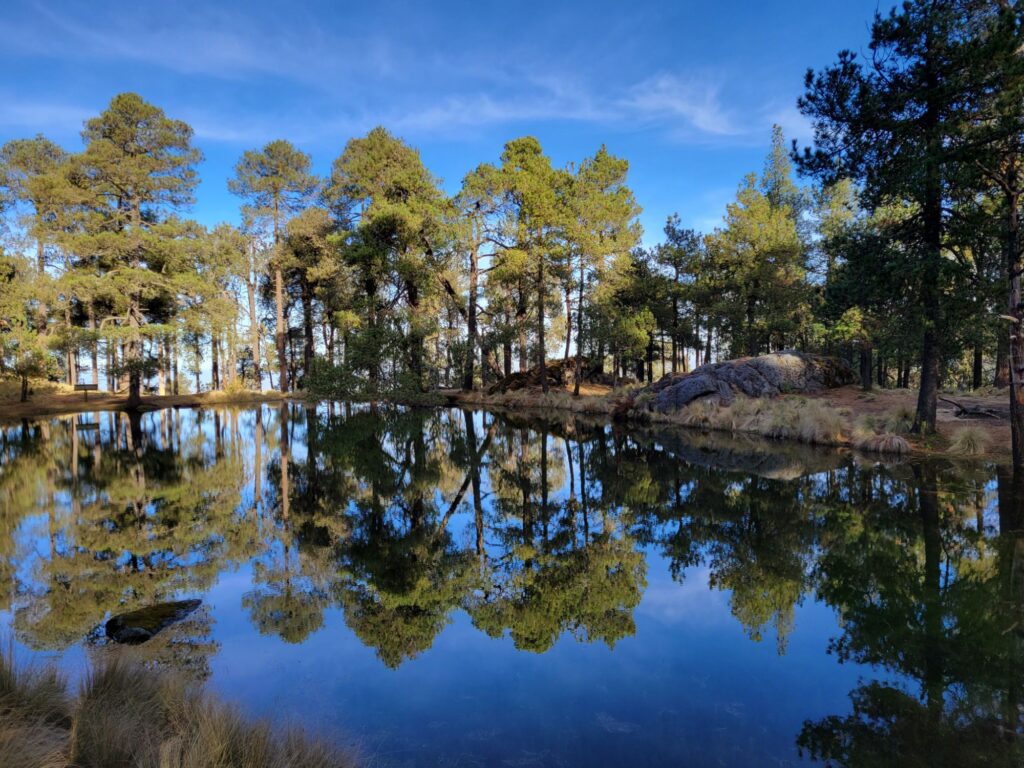
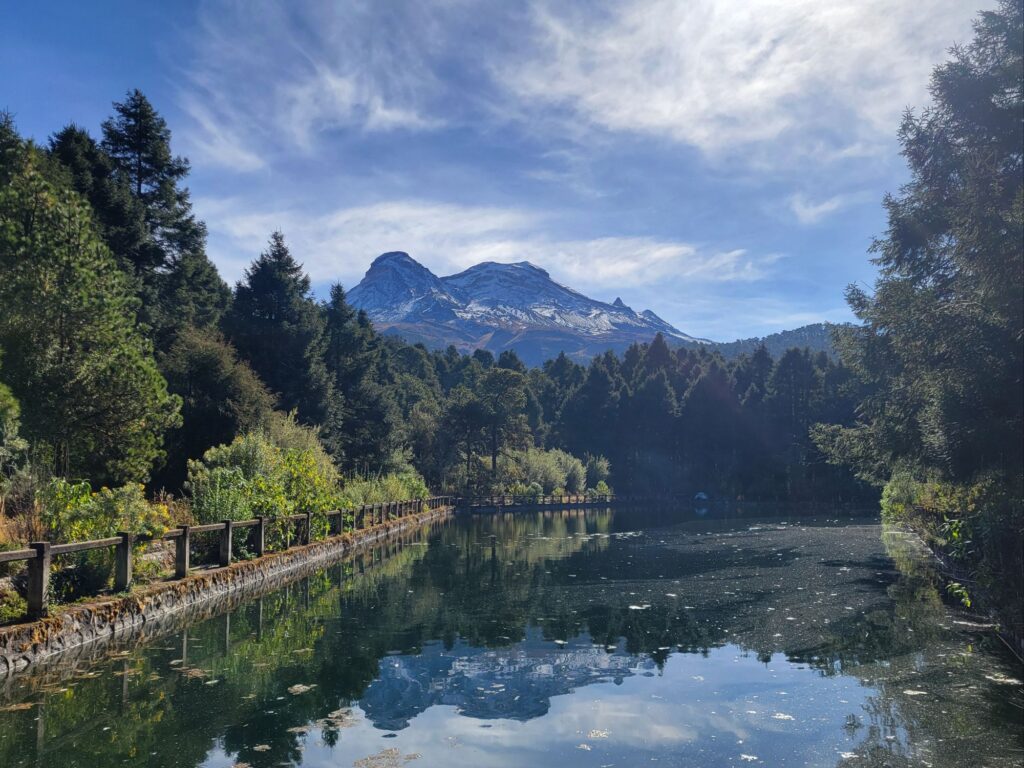
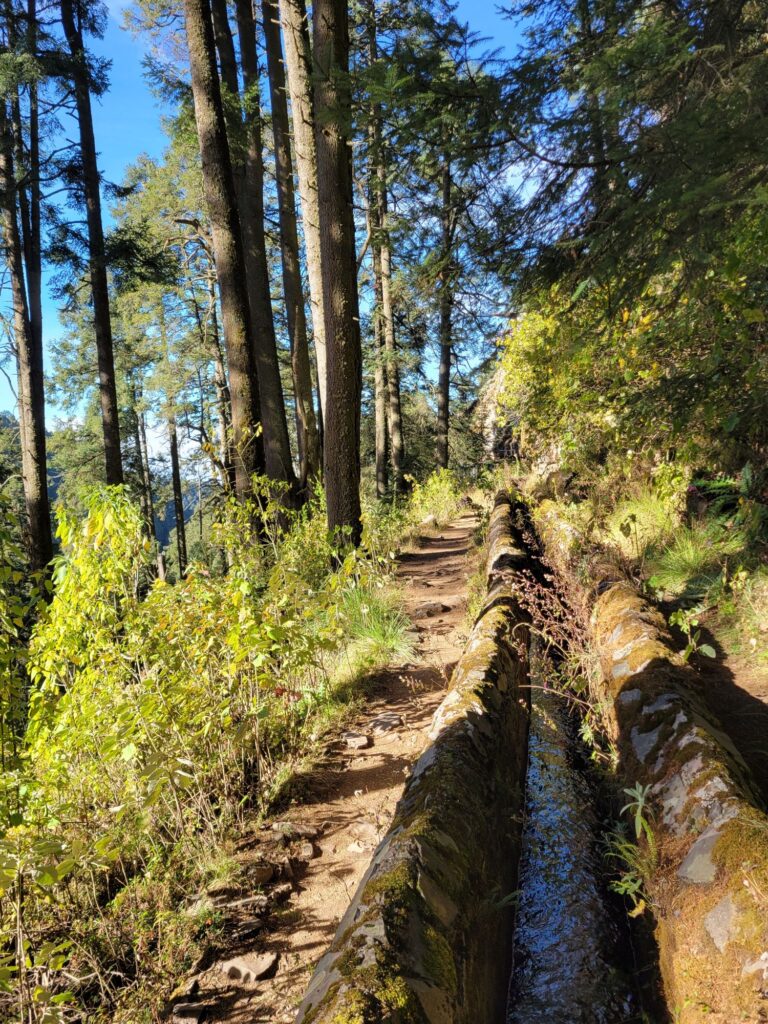
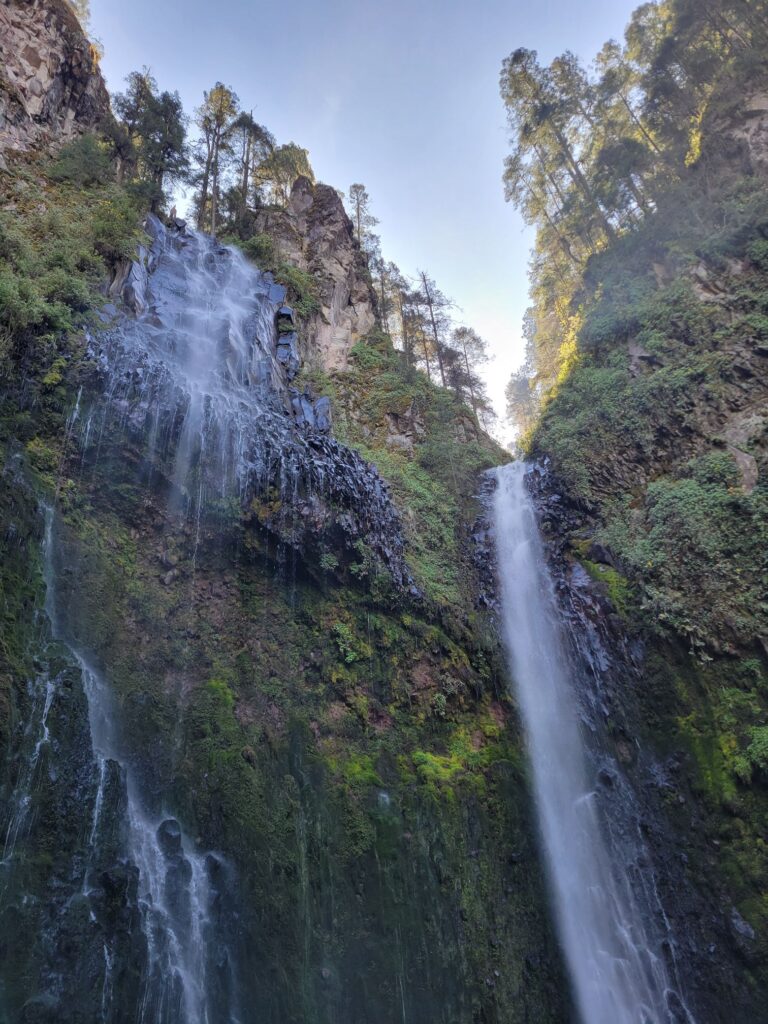
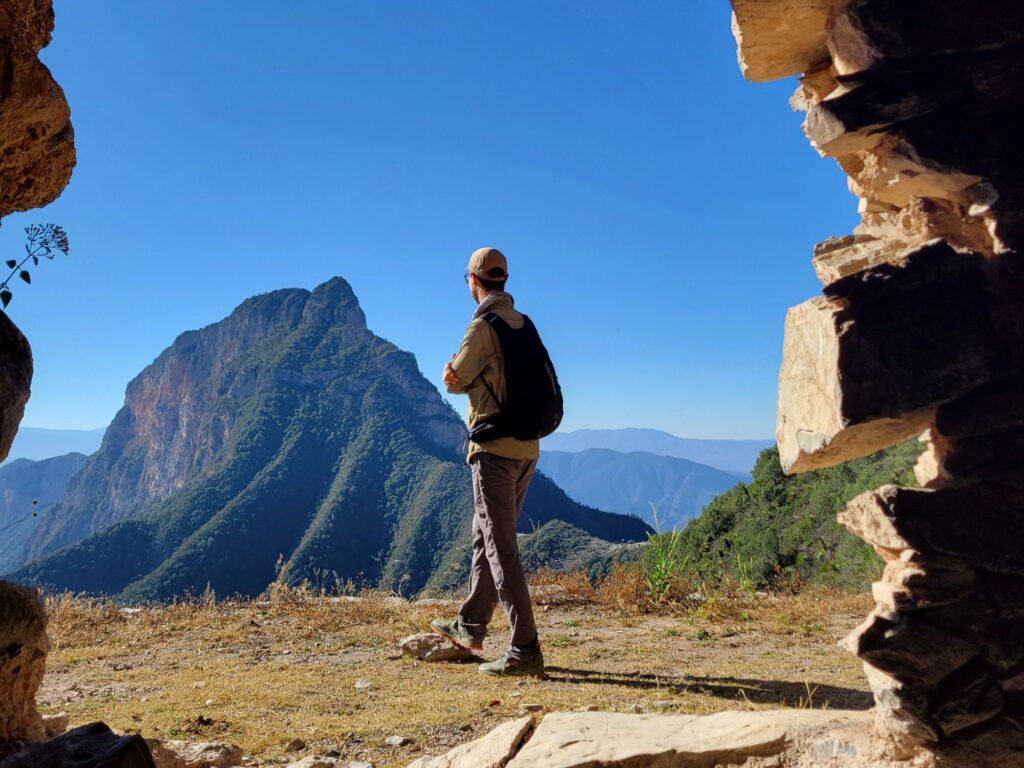
Junto con otras 8 aventureras, cruzamos la Sierra Gorda durante 4 días siguiendo el guiaje de @livethemountain_. Fue una ruta de una diversidad increíble para mi primera travesía mexicana fuera del Valle de México.
La Reserva de la Biosfera Sierra Gorda se extiende desde el semidesierto de Peñamiller, Querétaro hasta la selva de Xilitla, San Luis Potosí. Las montañas bloquean poco a poco las nubes que vienen del Golfo de México y el paisaje se vuelve un poco más seco en cada valle, creando un mosaico extraordinario de ecosistemas.
Nos llenamos de espinas en los cerros de Peña Blanca, cruzamos las aguas del Cañon del Paraíso, subimos 1500 metros hasta el mirado de Cuatro Palos, seguimos por los encinares de Pinal de Amoles, nos bañamos en las aguas turquesas del río Escanela, antes de acabar rodeados de aves en la presa de Jalpan de Serra.
Toda la zona es conocida de los turistas locales por sus miradores, ríos y canones pero no cruzamos a casi nadie en los senderos, aunque me parecieron seguros y bastante fáciles de seguir.
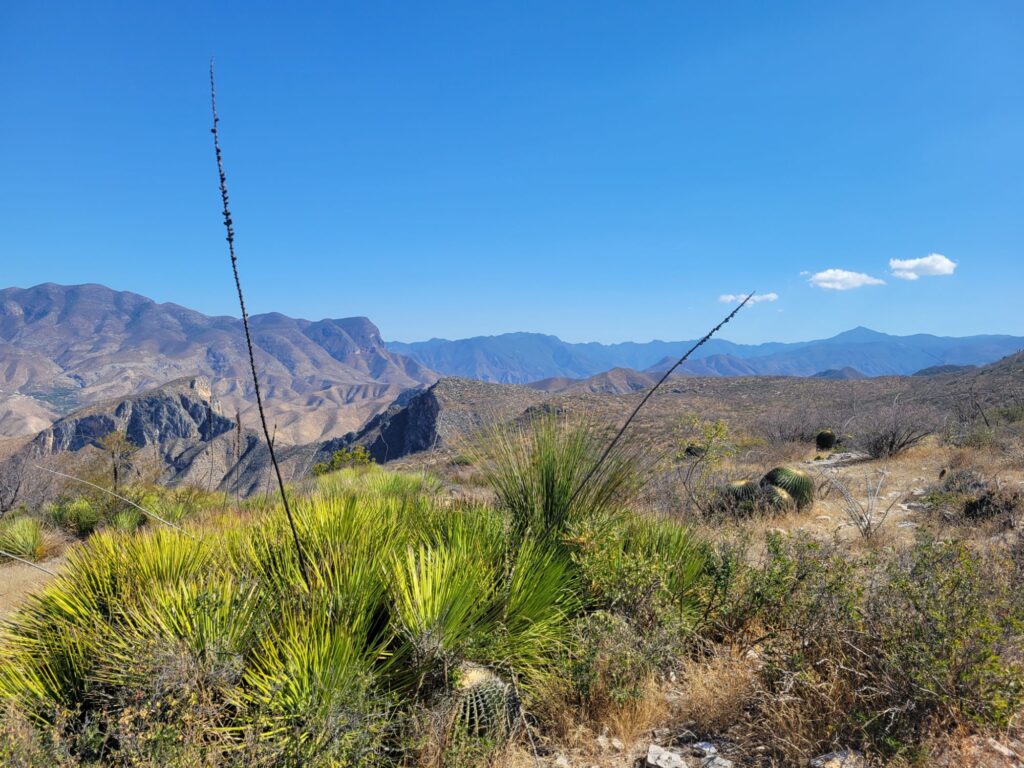
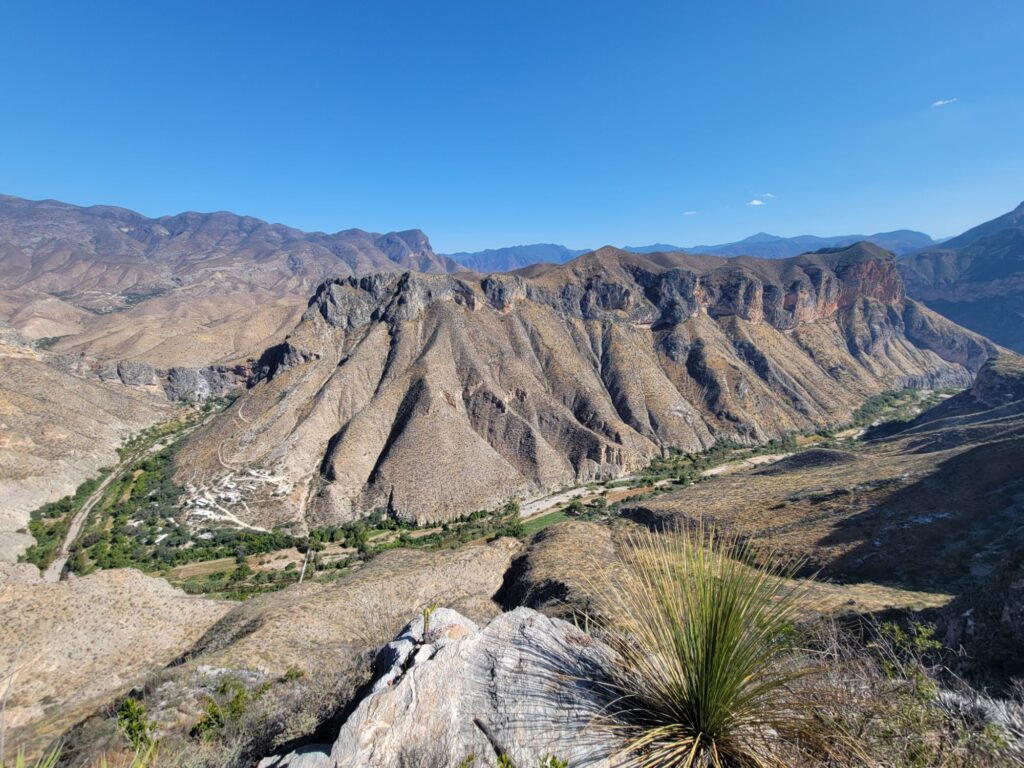
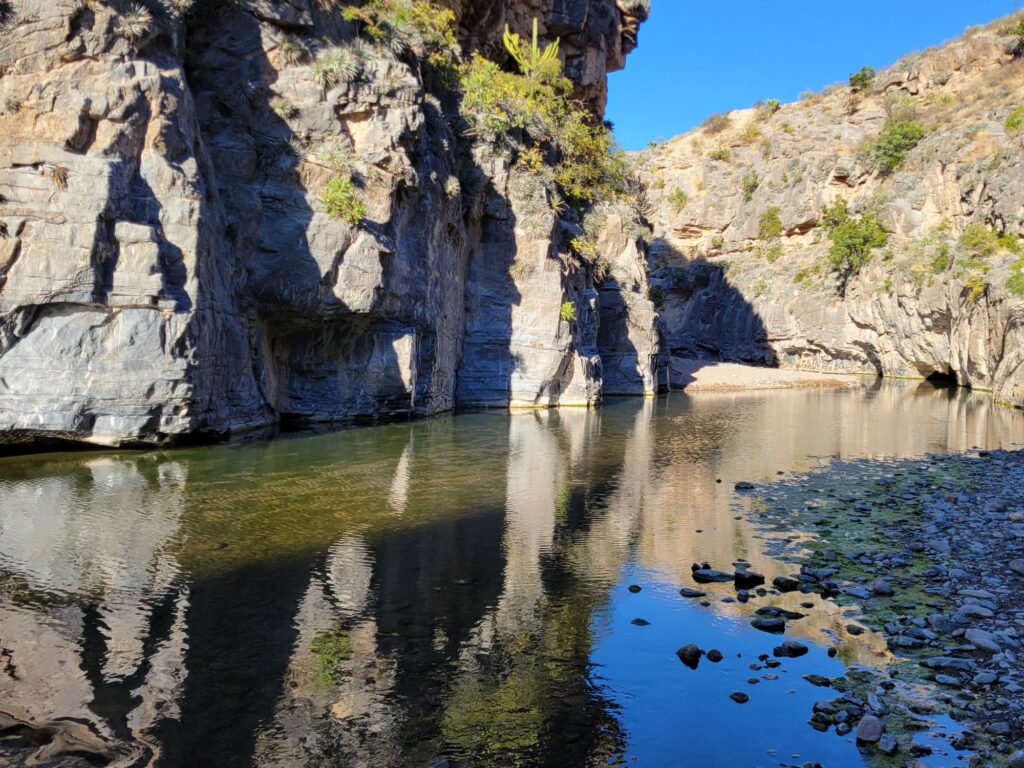
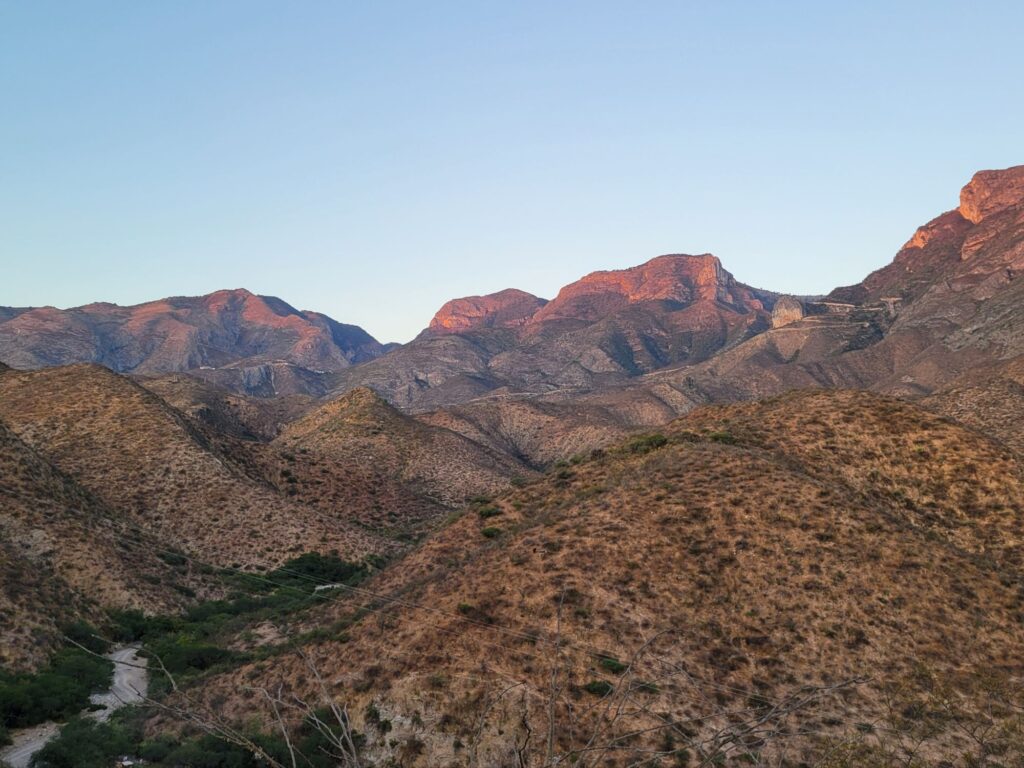
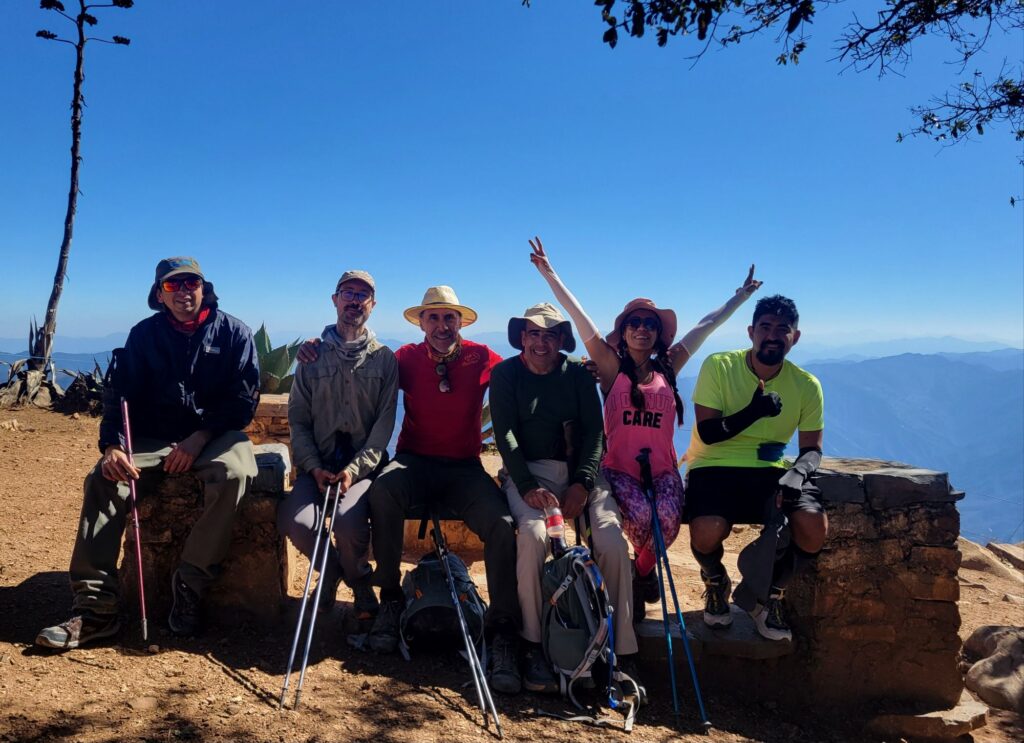
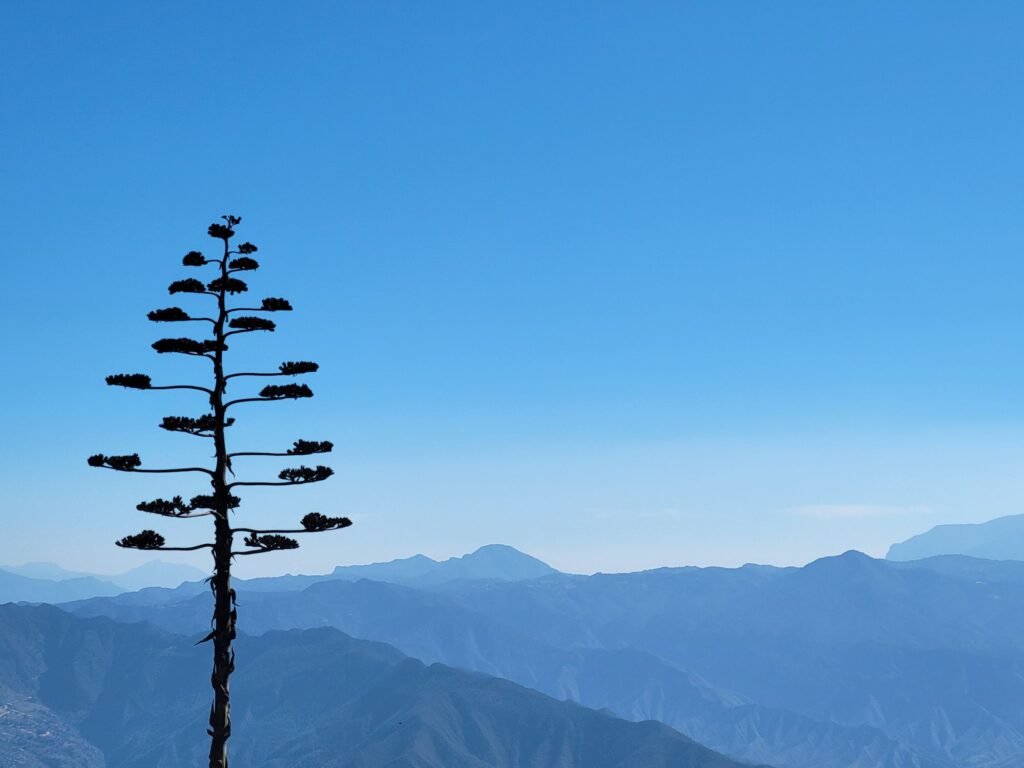
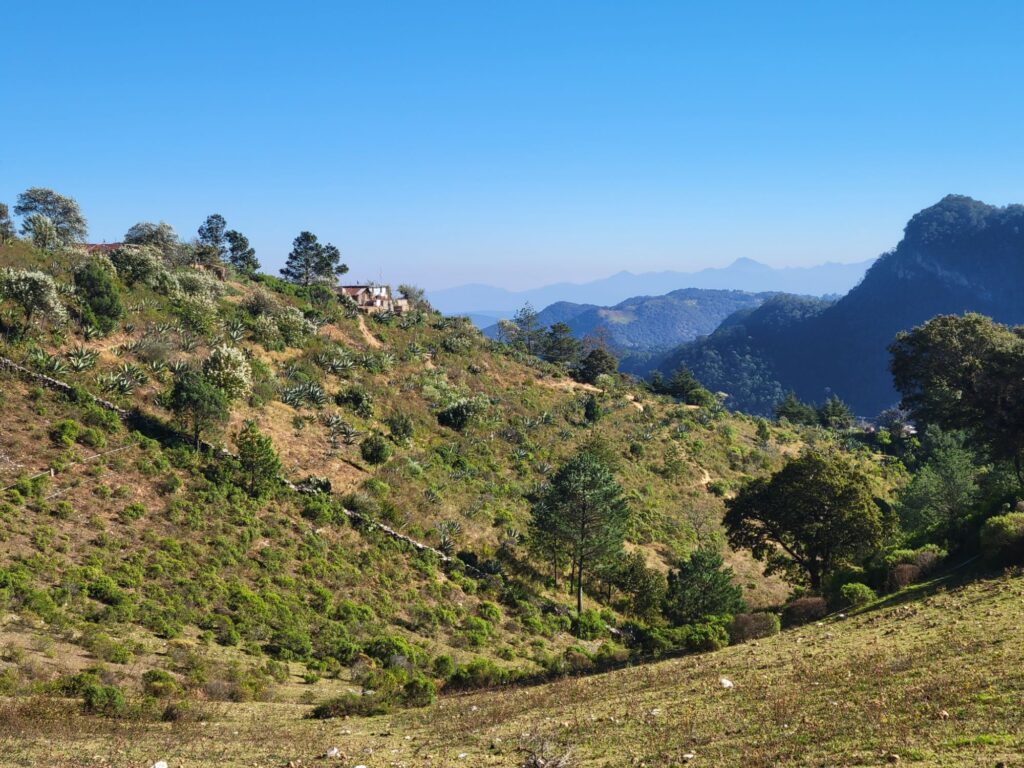
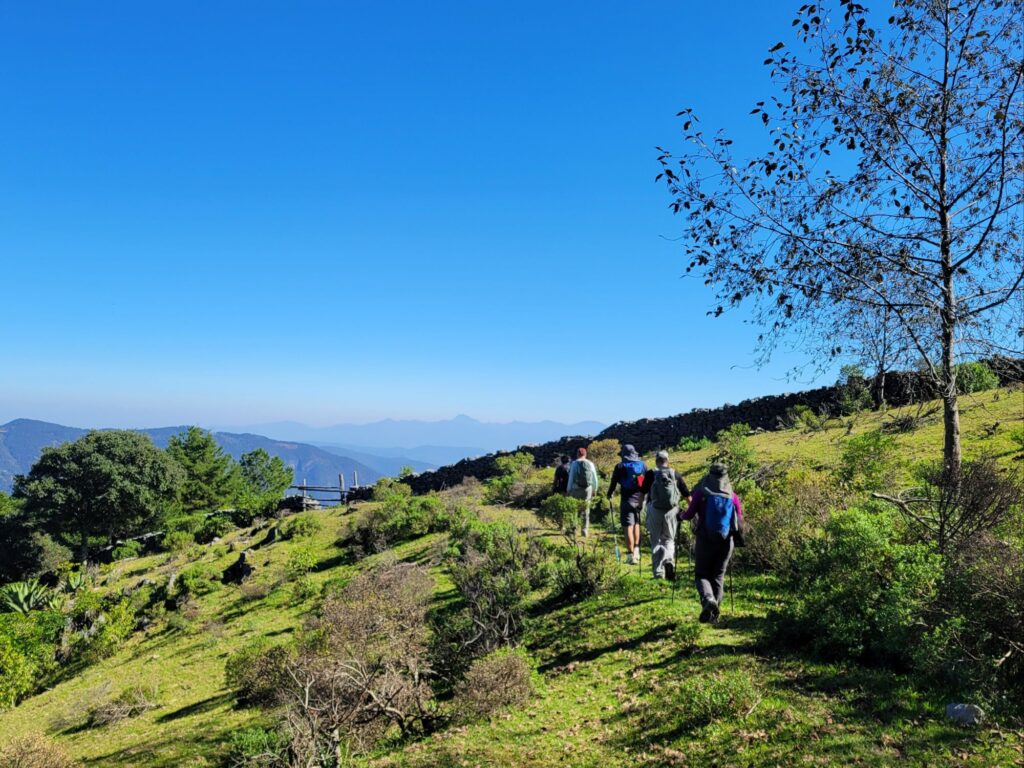
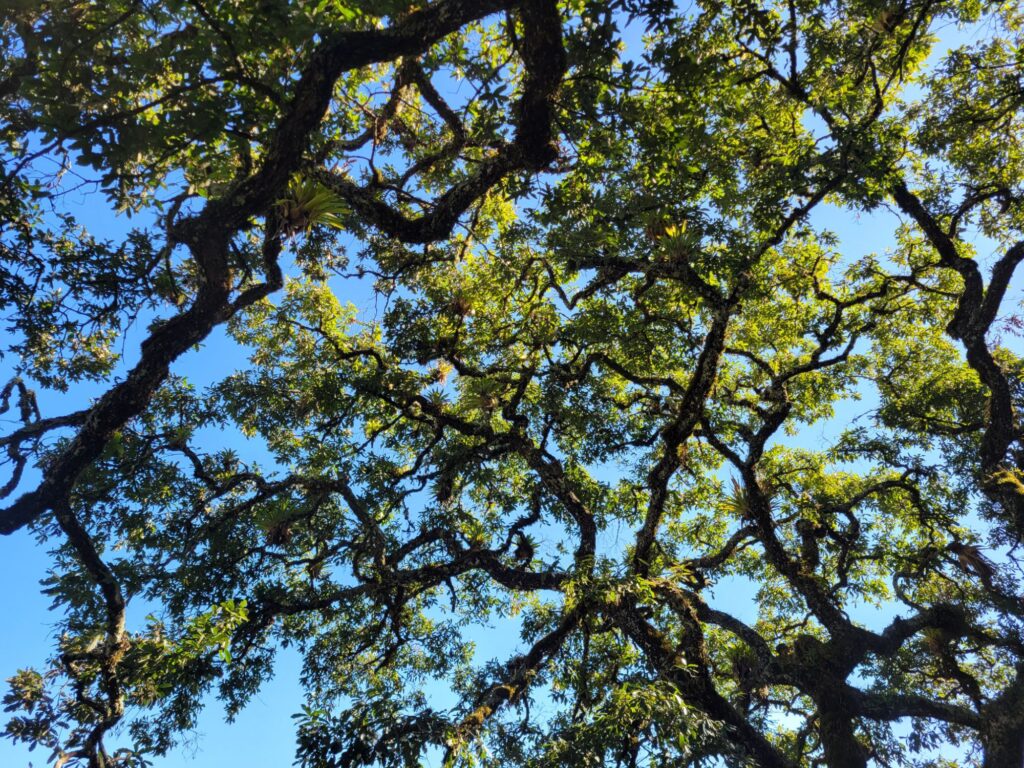
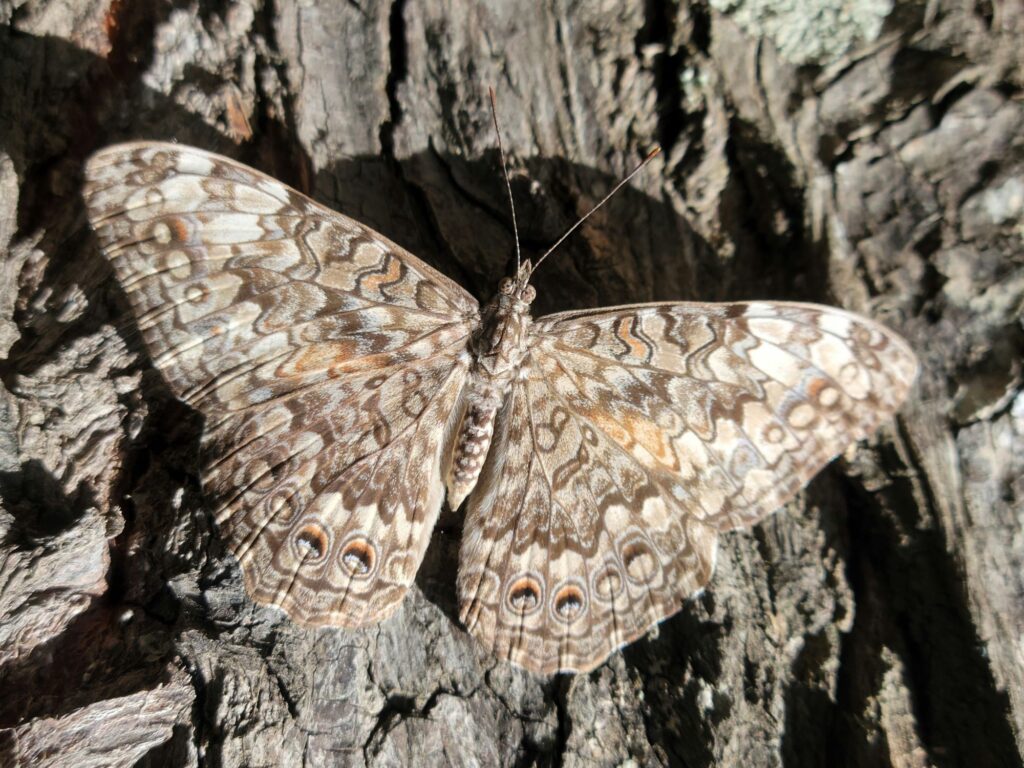
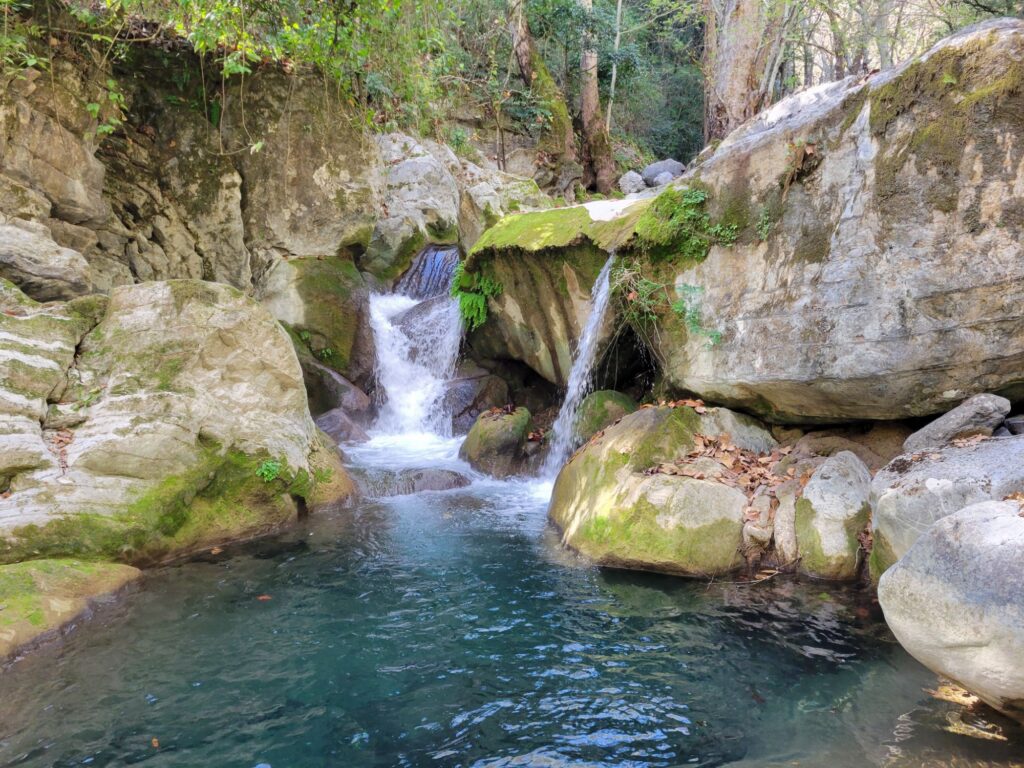
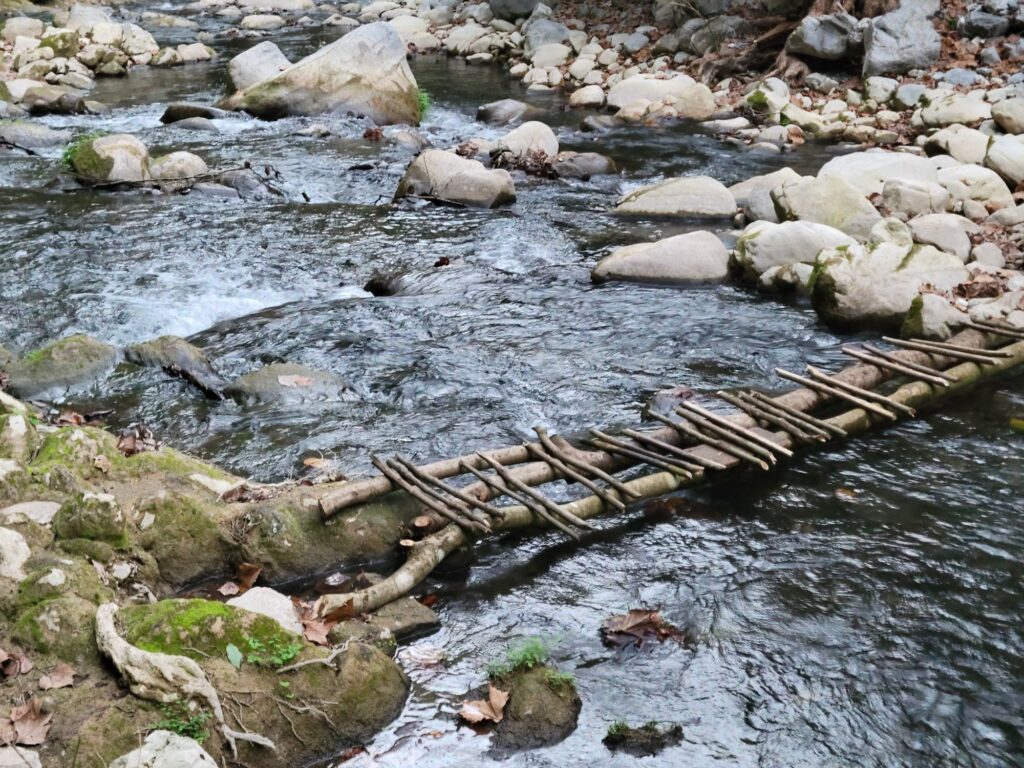
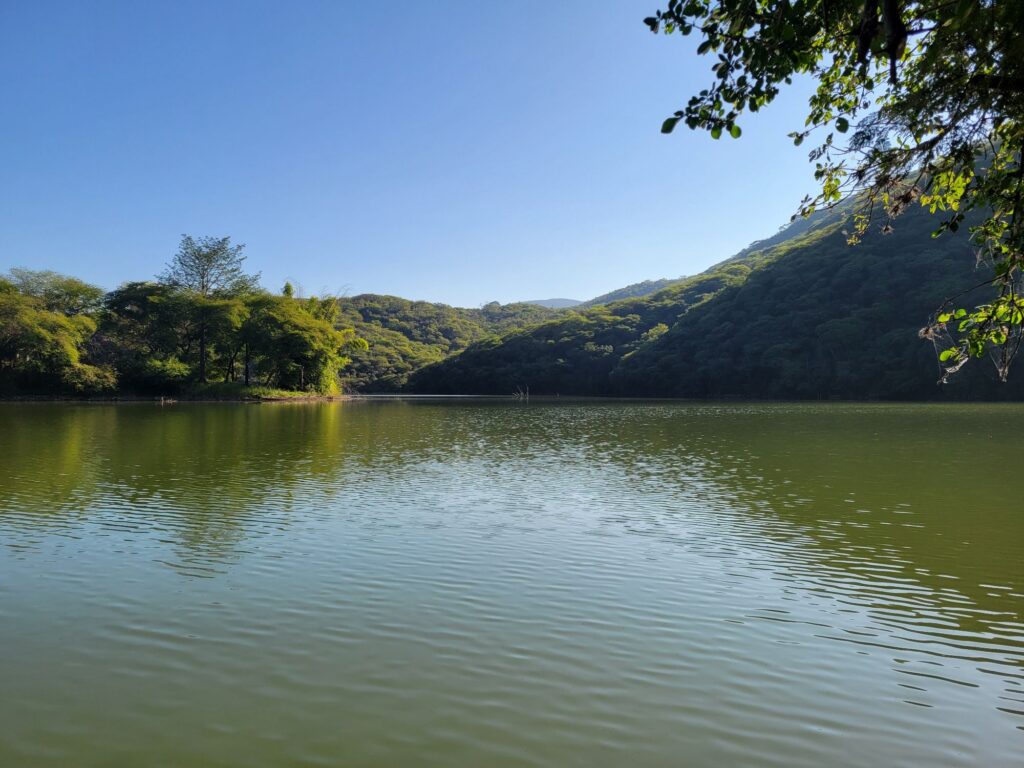
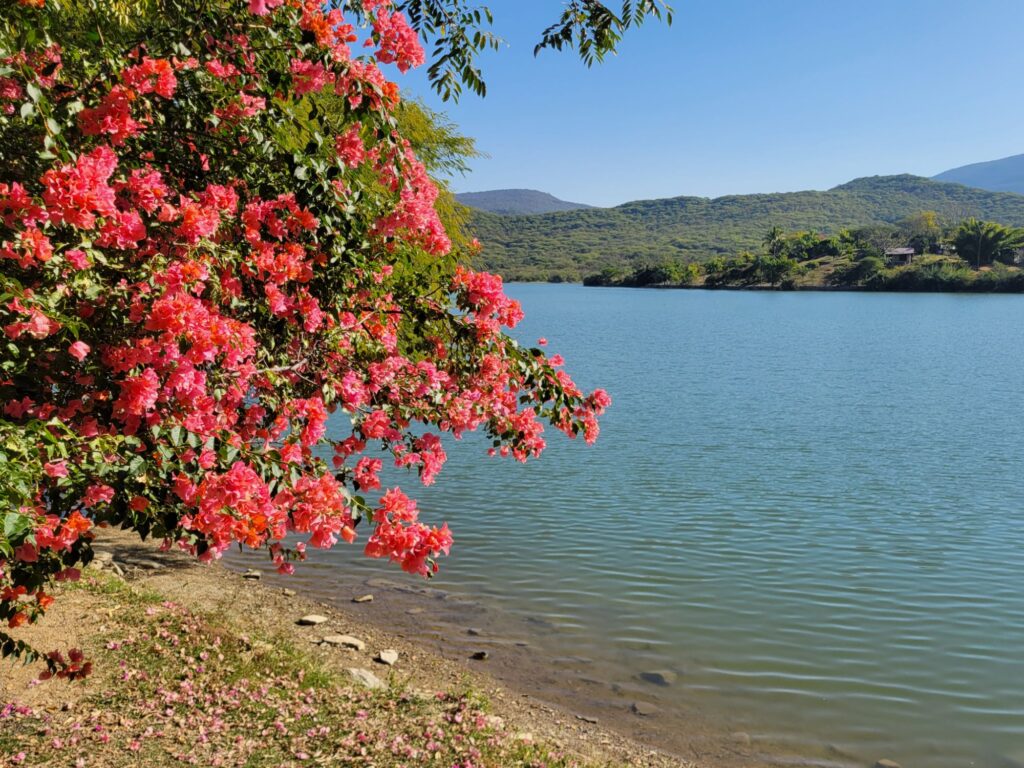
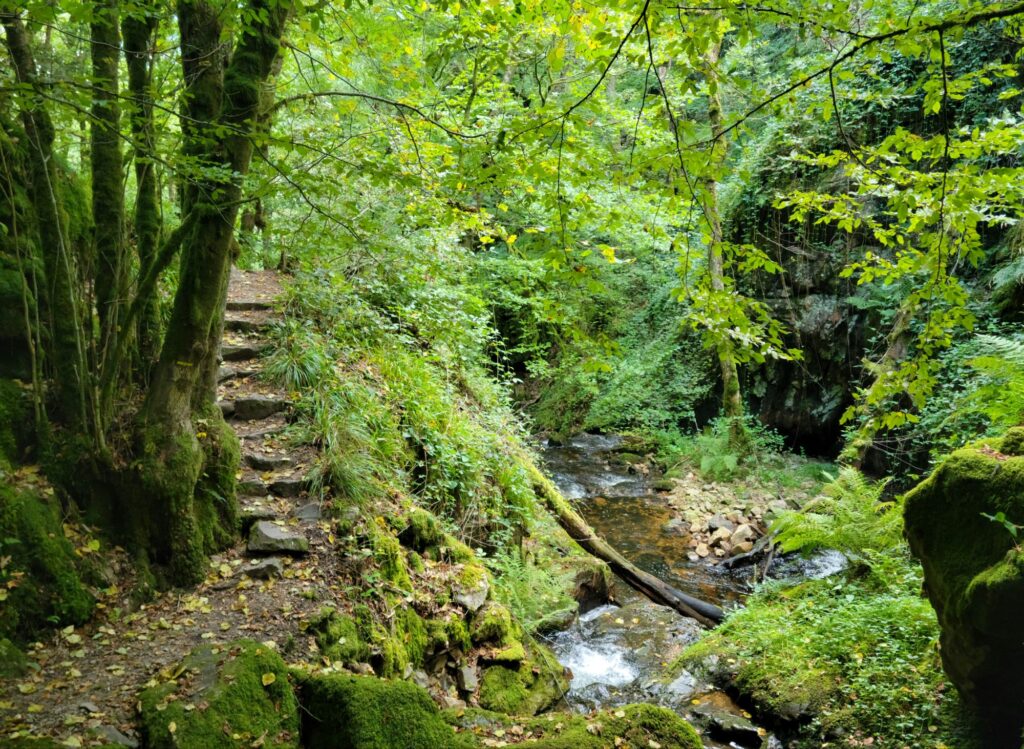
Je me suis rabattu sur le sud Morvan pour 4 jours de marche faciles à improviser après que Boris ait fait tomber à l’eau nos projets de Tour du Mont Blanc.
Le pari de troquer montagne pour forêt a réussi!
Du beau temps, ni chaud ni froid. Un transport facile avec un train par heure de Dijon à Étang-sur-Arroux et un bébé col à vélo. Des forêts magnifiques, bien entendu. De l’eau à foison. Personne sur les chemins. Et quelques chanterelles en prime…
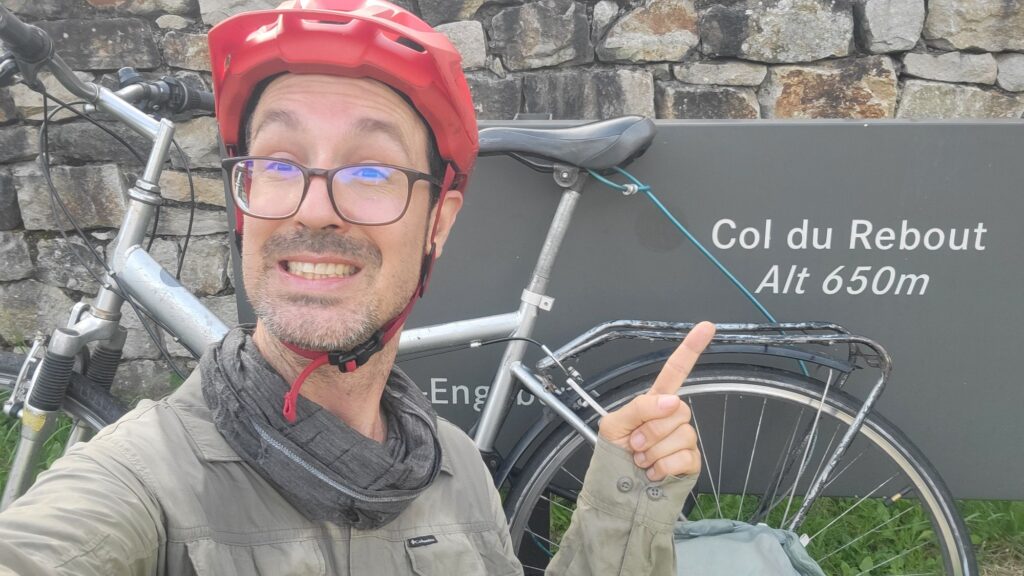

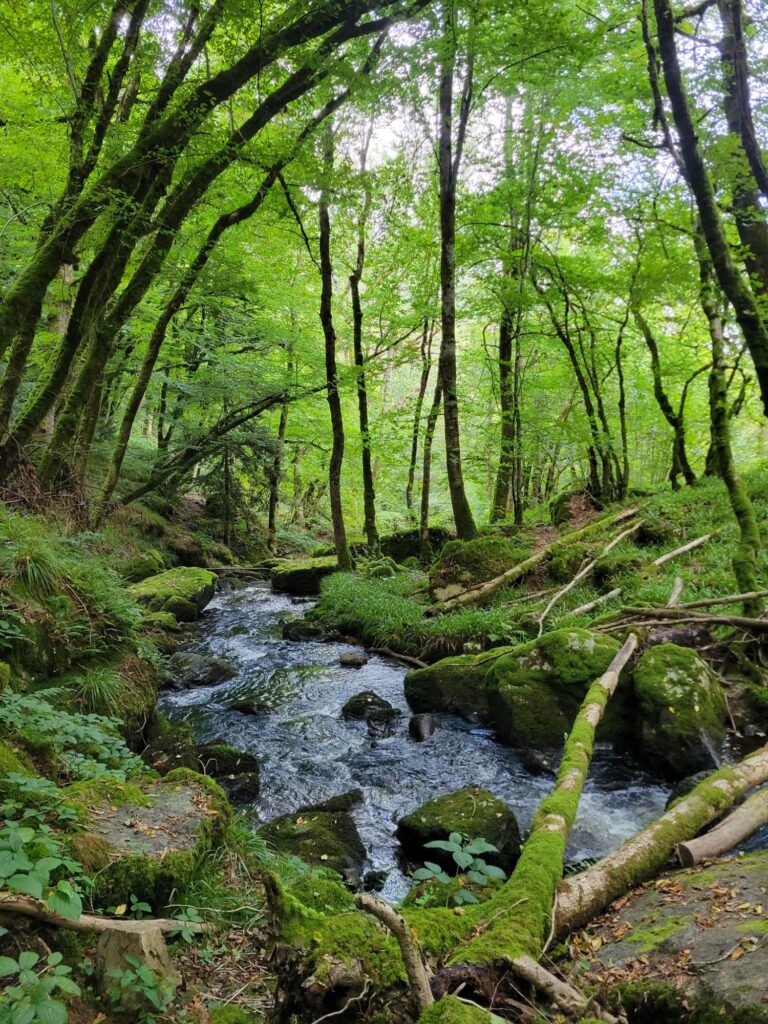
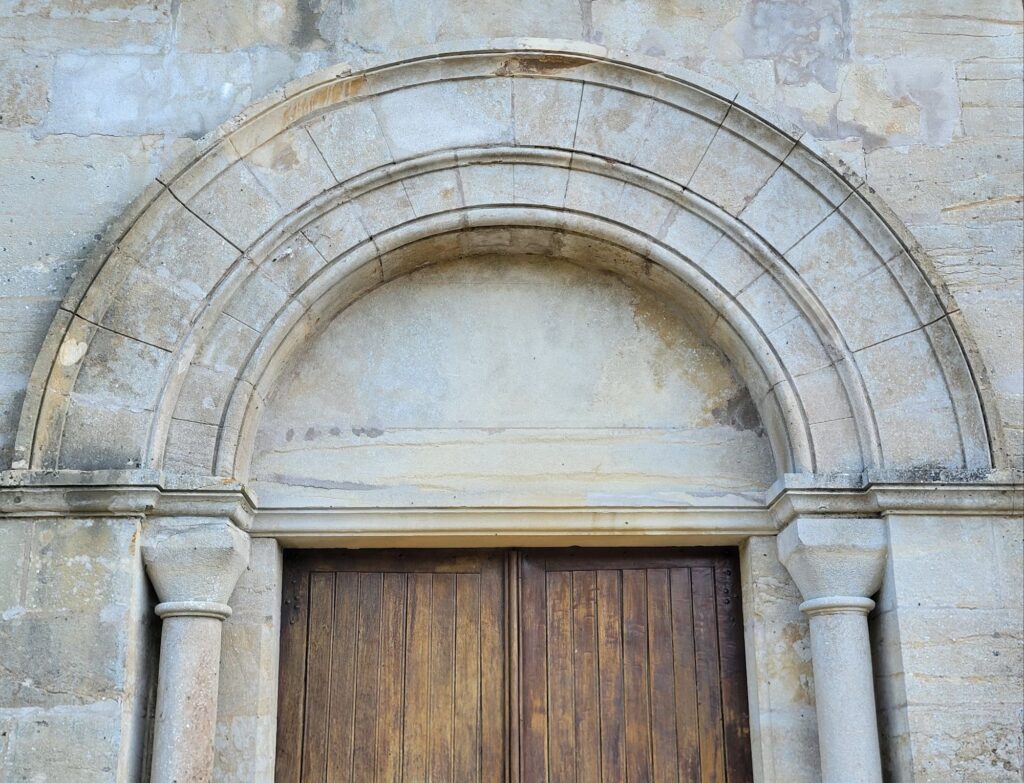
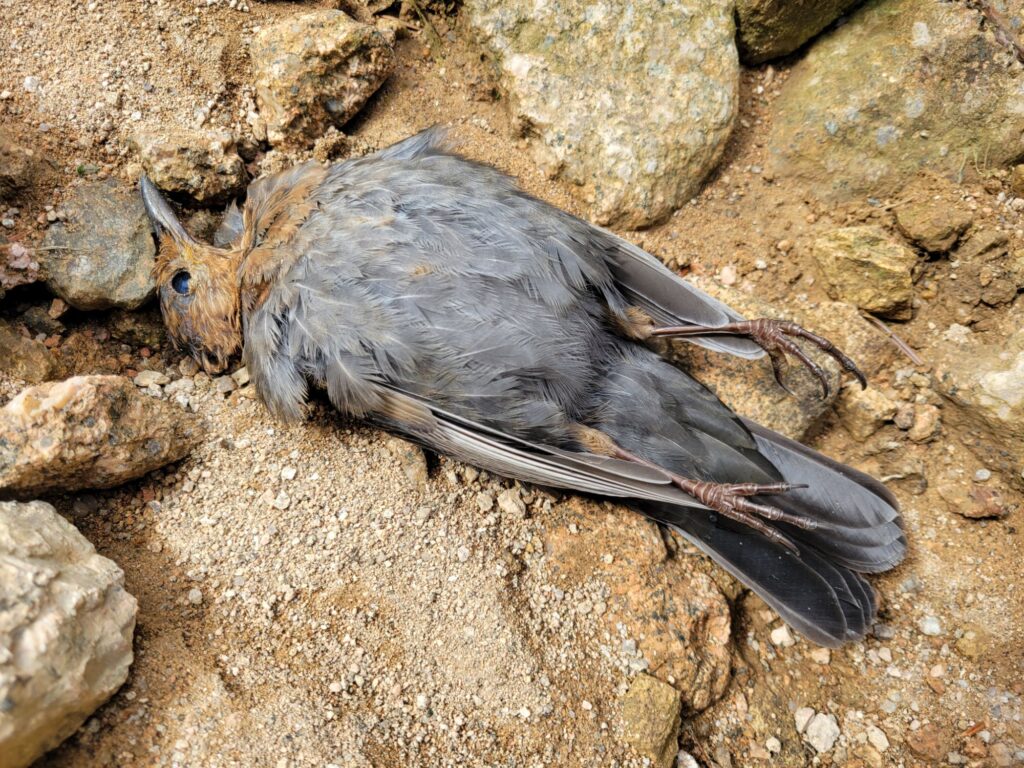
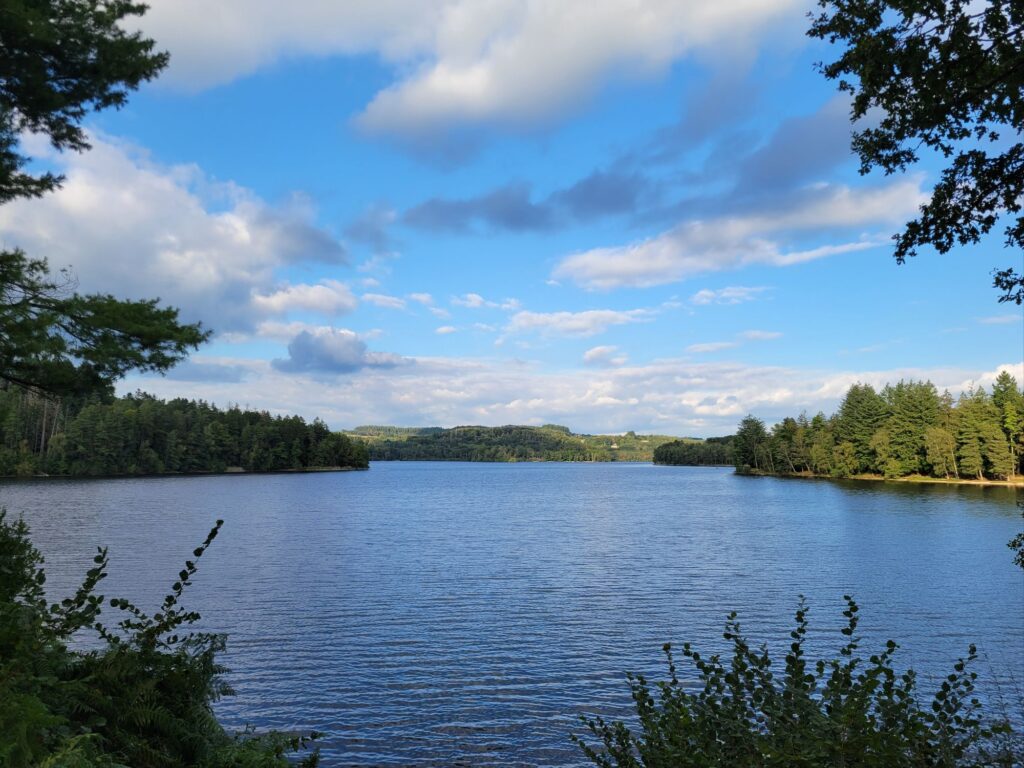
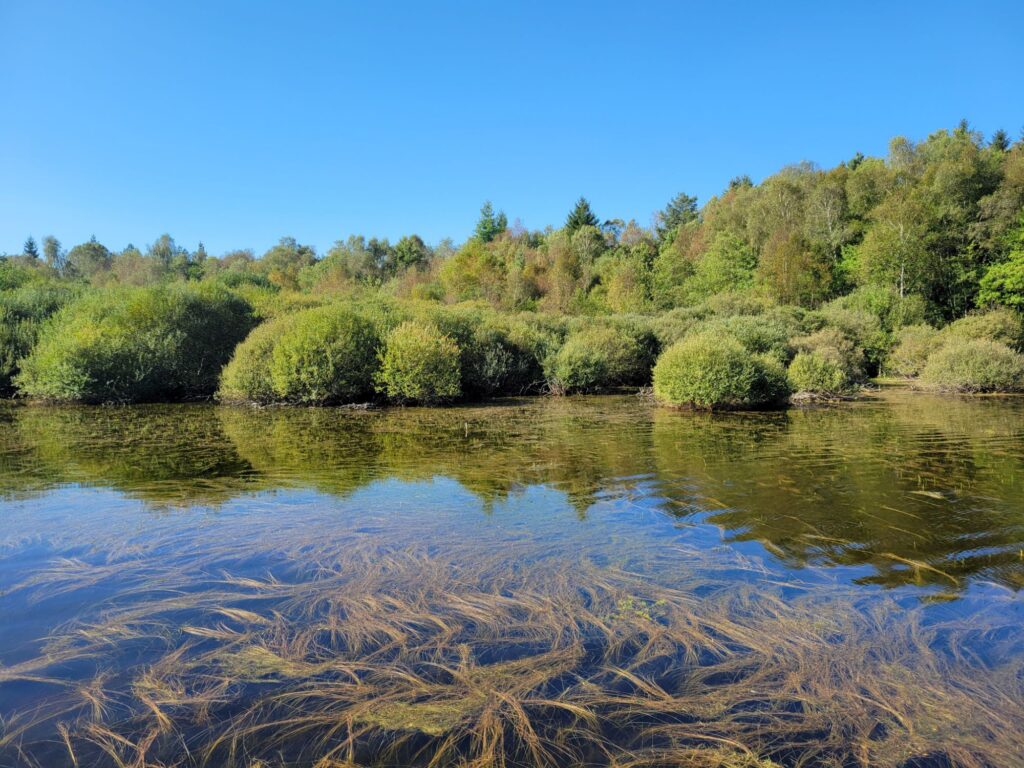
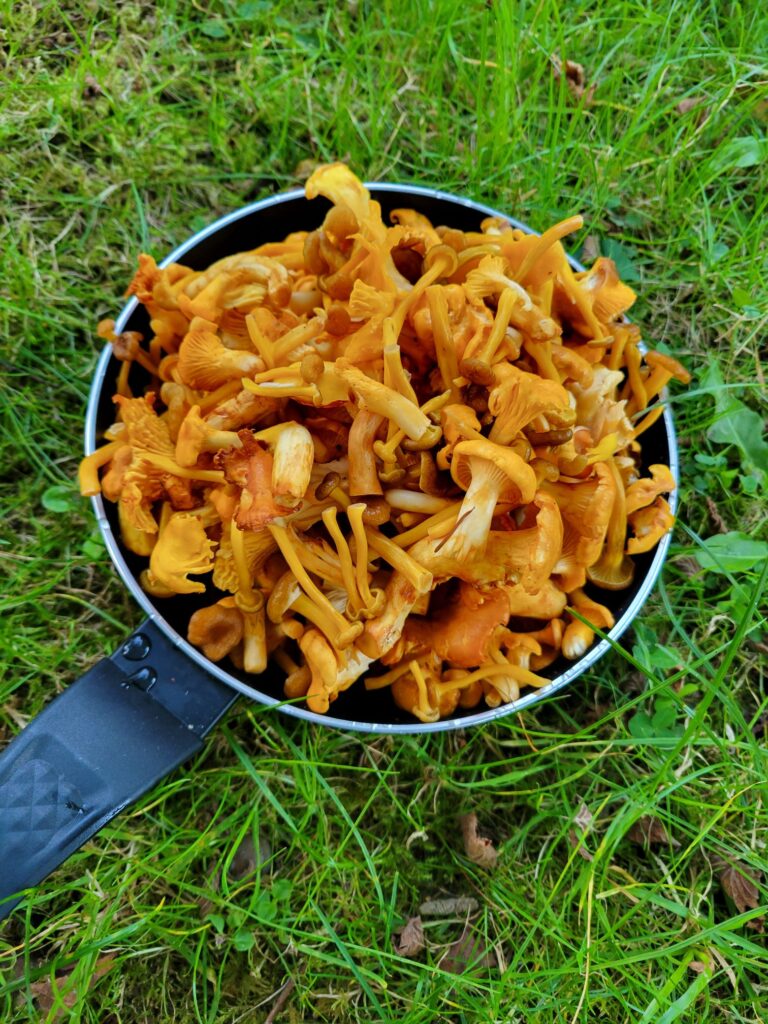
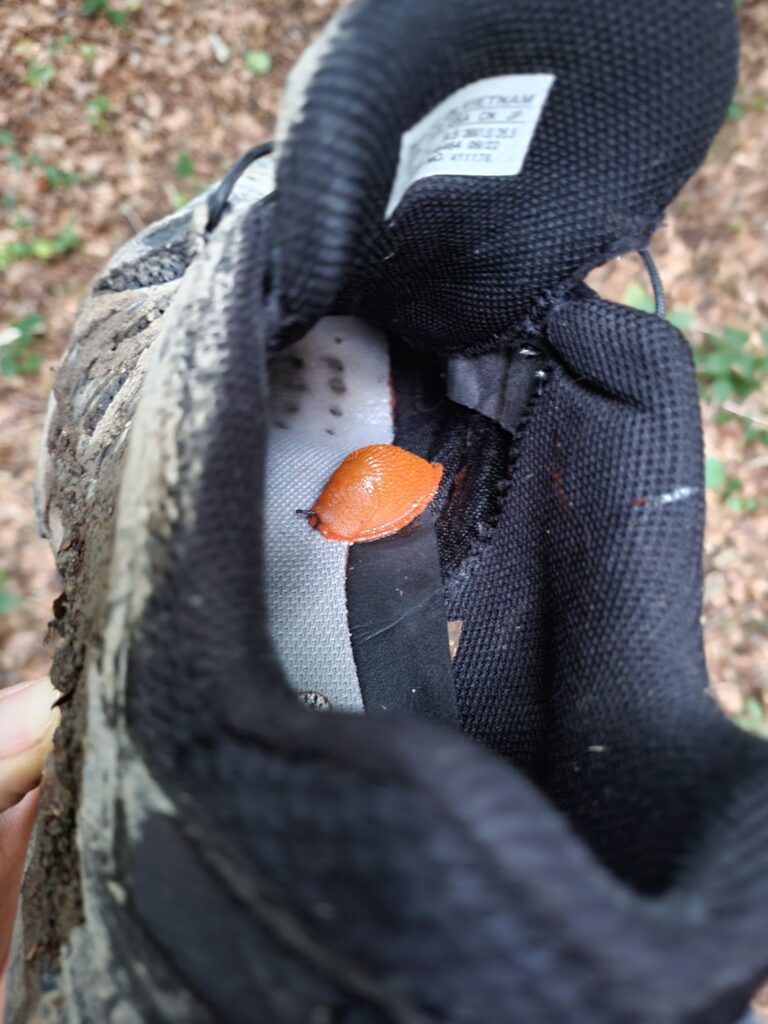
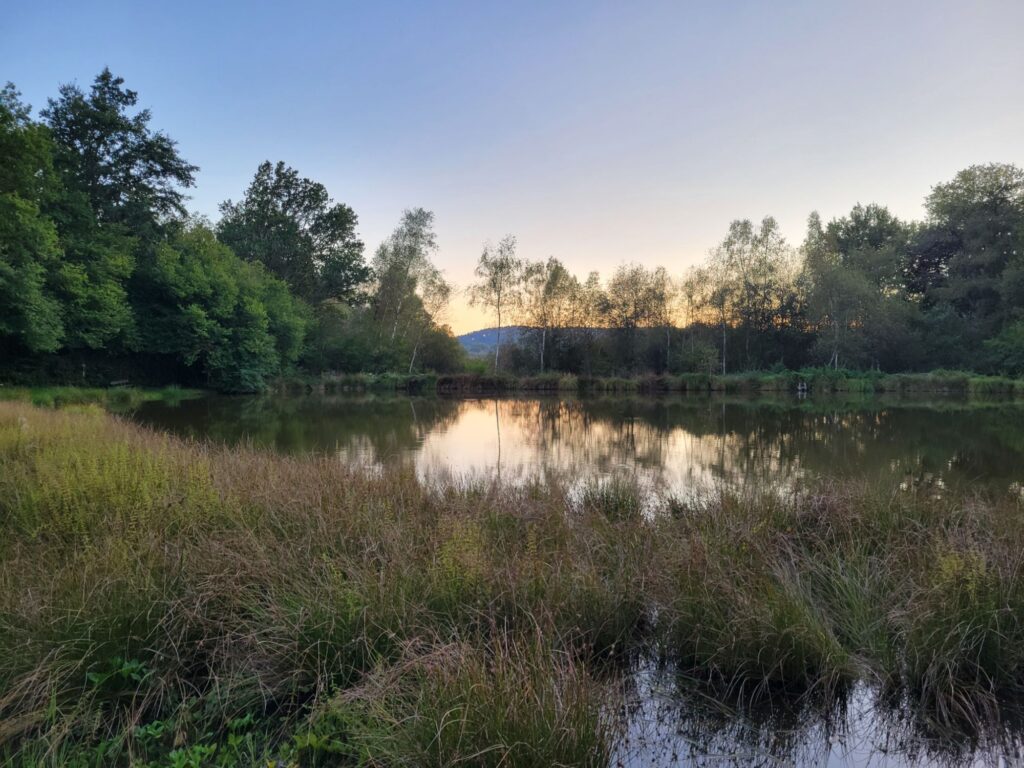
Reviewing new or noteworthy gear from my hikes in the High Sierra.

After viewing the Yosemite Valley from all angles, I had 9 more days on my permit to explore the rest of the 3000 km² of the park.
After hiking up the Illilouette Creek and its gardens of pines and wildflowers, the first highlight was Red Peak Pass, the highest trail in the park (3400 m). I loved the big open views above the timberline and the palette of white, red, and gray rocks in glacial landscapes. Oh, and I barely saw anybody in 3 days…
On Day 7, I could fetch my second week of food from the locker in Tuolumne Meadows and refill in ramen bombs.
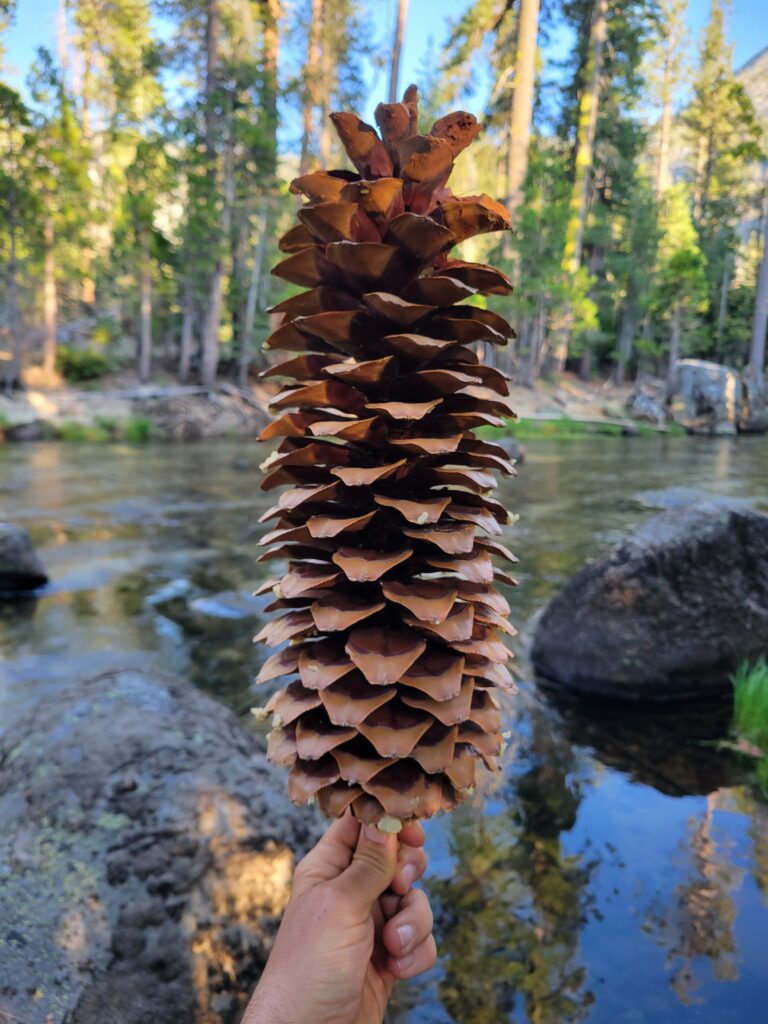

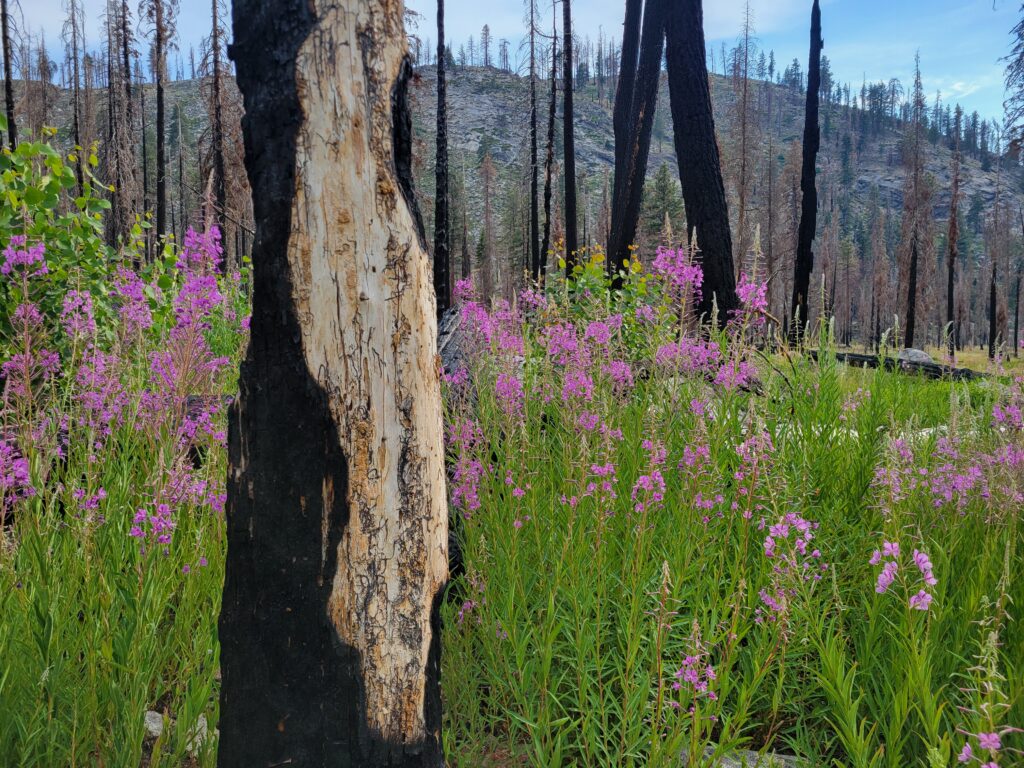
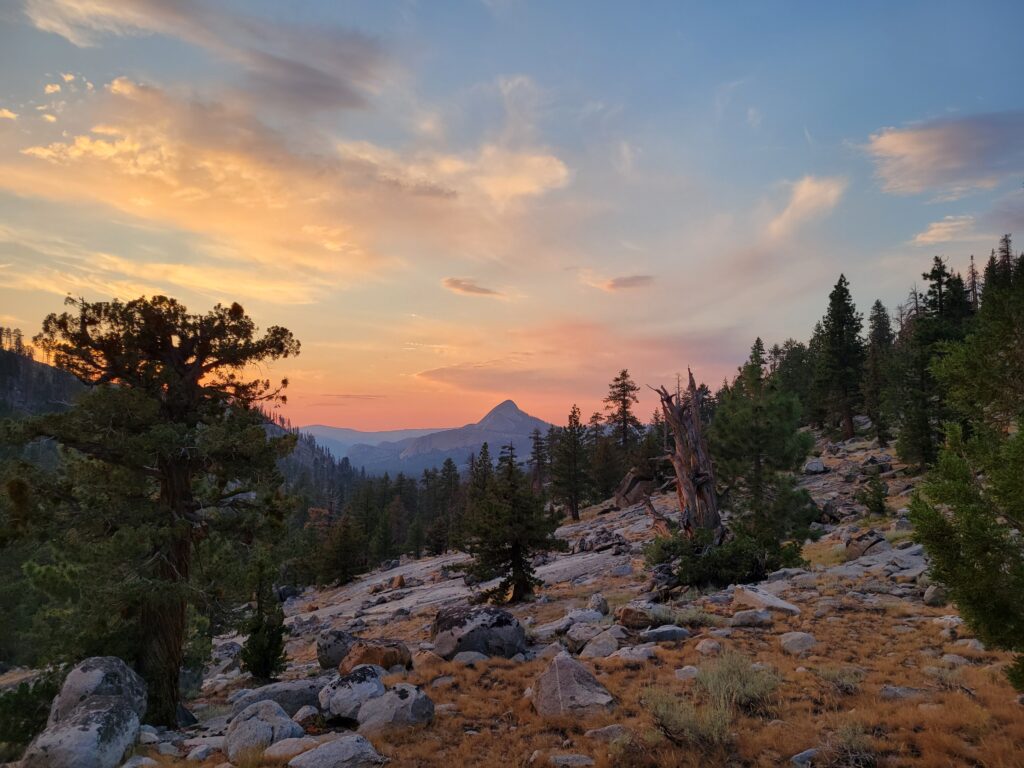

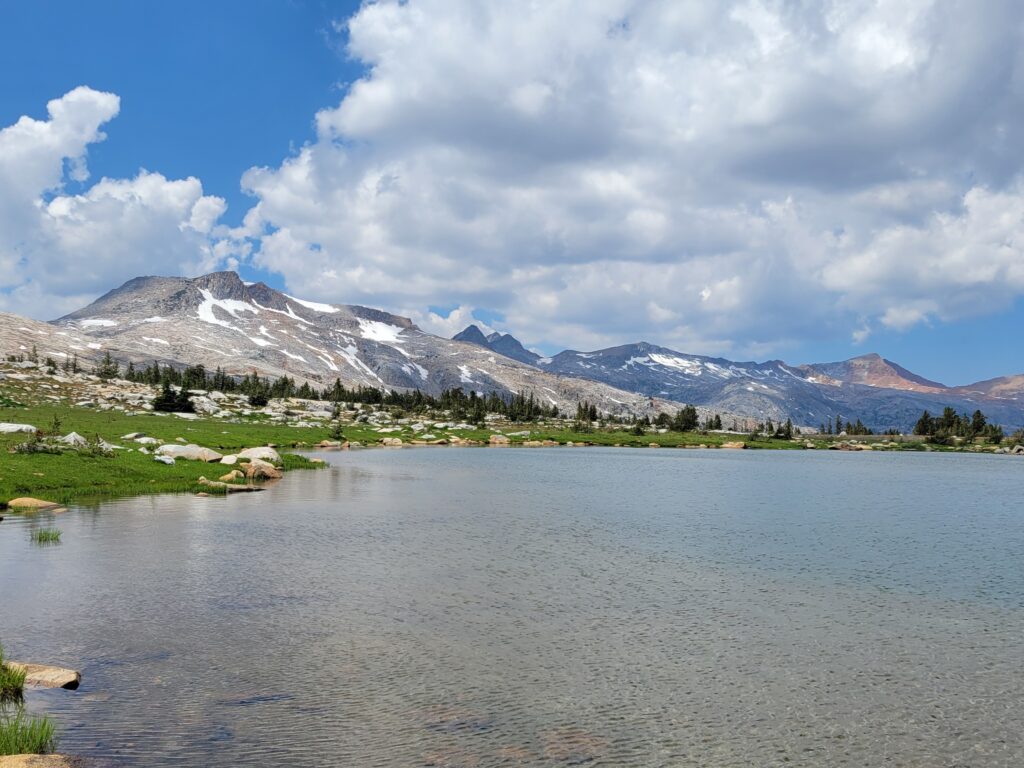
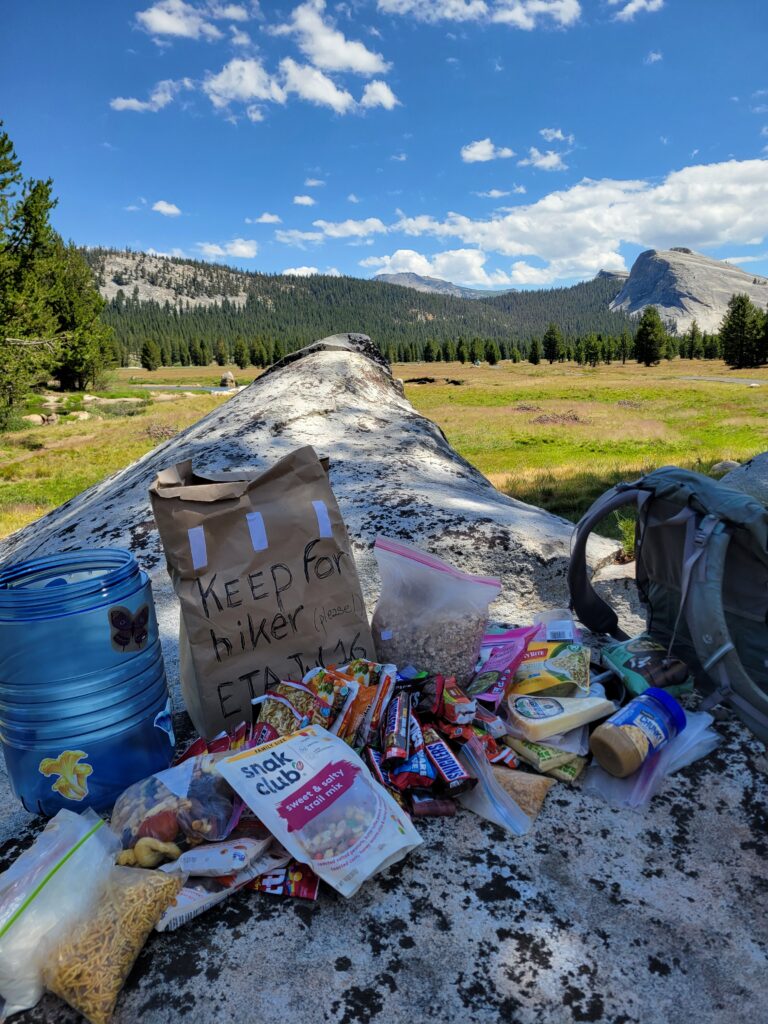
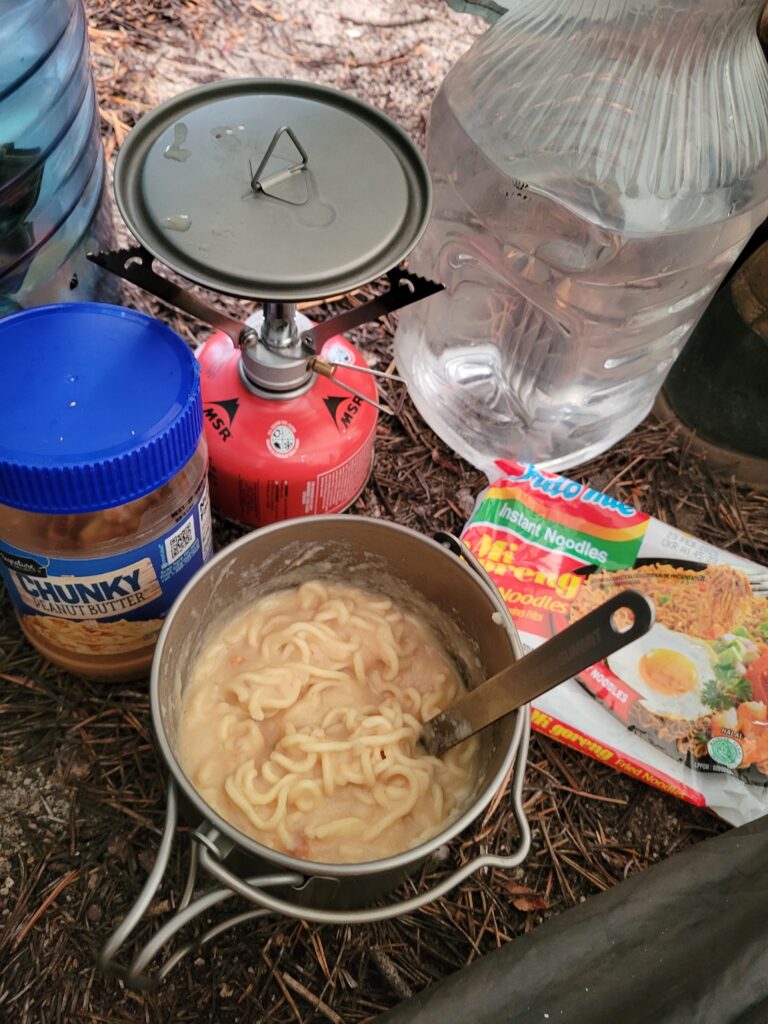
Tioga Road at Tuolumne Meadows was the only road I crossed in 2 weeks and 275 km. It was magical to hike in landscapes where a foot trail was the only mark of human activity (and sometimes not even that…). No cars, no houses, no power lines, no city lights.
On the upside, that meant lots of wildlife, some relatively unafraid of humans, like these deer or this mama bear and her cub coming for a snack with me by the creek. It was also striking to see many more birds than in Europe: bright blue jays, flocks of quails, duck families, red-tailed hawks, flirtatious hummingbirds, etc. And the biggest mushroom I’ve ever seen!
On the downside, that meant long stretches of forest and relatively few open views, unlike in Europe where millenniums of pasture make it possible to hike for days above the tree line. Not as good for biodiversity and carbon storage, but great for hiking.


What I found most beautiful outside of the valley were the water features: the Grand Canyon of the Tuolumne River with its constant cascades and natural pools running for 20+ km, the sandy beach at Benson Lake, the hundreds of glacial lakes (swimsuit optional), etc. Mid-July was a sweet spot this year: no snow on the trail, still a lot of water, but late enough to make stream crossings safe and the water always refreshing but never cold.
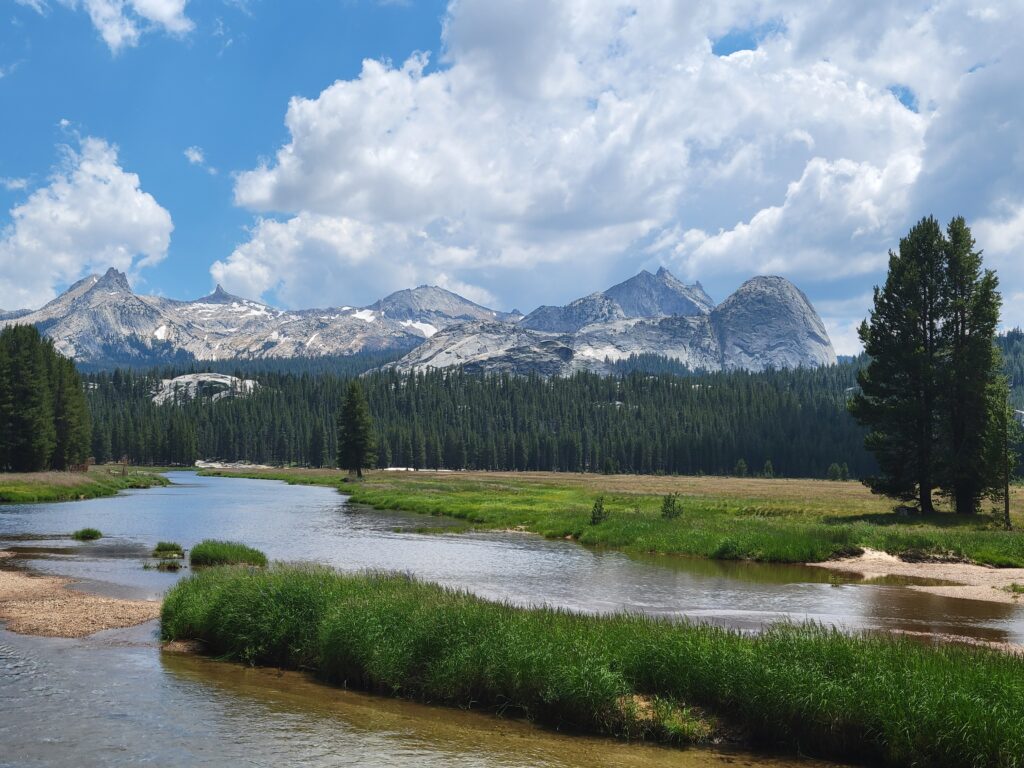

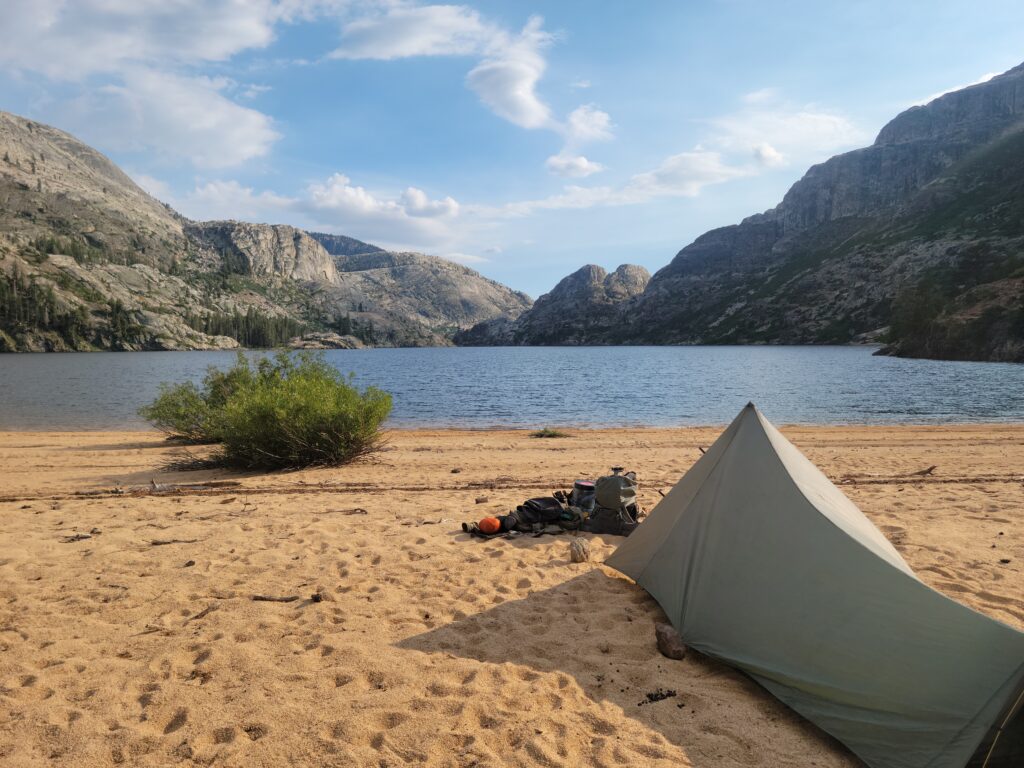

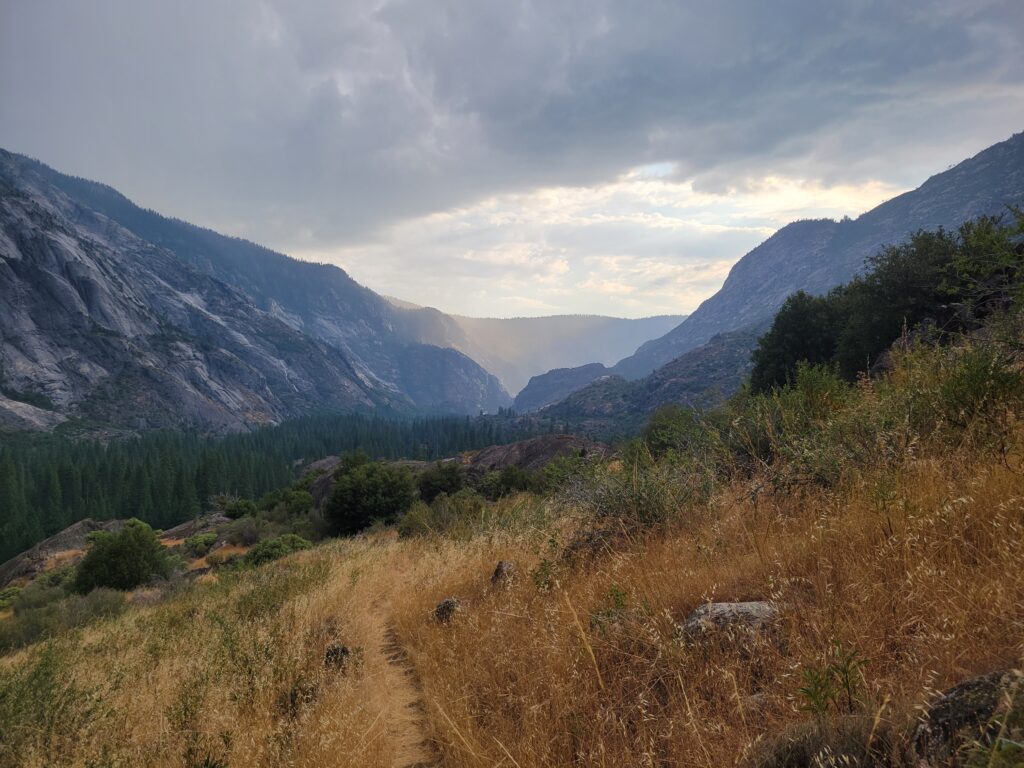

I finished my trip at sunrise on top of Mount Hoffmann, with incredible views at 360° on the whole National Park.





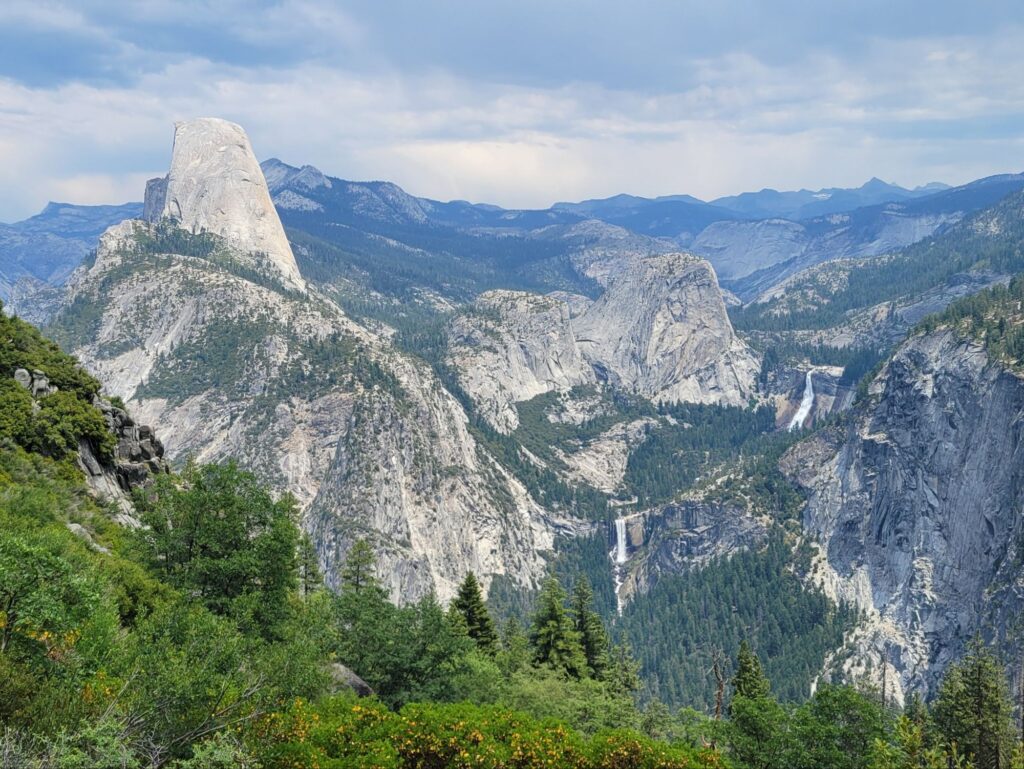
Having heard so much about Yosemite, I wondered whether it was overrated. It’s not. It’s truly one of the greatest natural wonders.
Lodging on the valley floor is hard to get and expensive. Arriving by bus with YARTS, I was allowed to stay 1 night in the cheap but precarious Backpackers Campground. My Backcountry Permit, starting on the next day, granted me another night. A ranger confirmed it was a loophole to stay 2 nights, but legal. A hacker gonna hack…
I got to spend a whole day on the valley floor. The free shuttle and a bit of walking were enough to have great views of El Capitán, Half Dome, and swim in the Merced River.
I discovered at the last minute that my resupply option for my second week of backcountry didn’t work. So, I also learned how to shop for exactly 7 days of food in 1 hour. Useful backpacking skills!
The gray colors and textures of the granite walls are mesmerizing. Sometimes looking like polished metal, sometimes like an abstract expressionist painting, and constantly changing throughout the day. Trying to spot climbers up adds to the hypnotic experience.


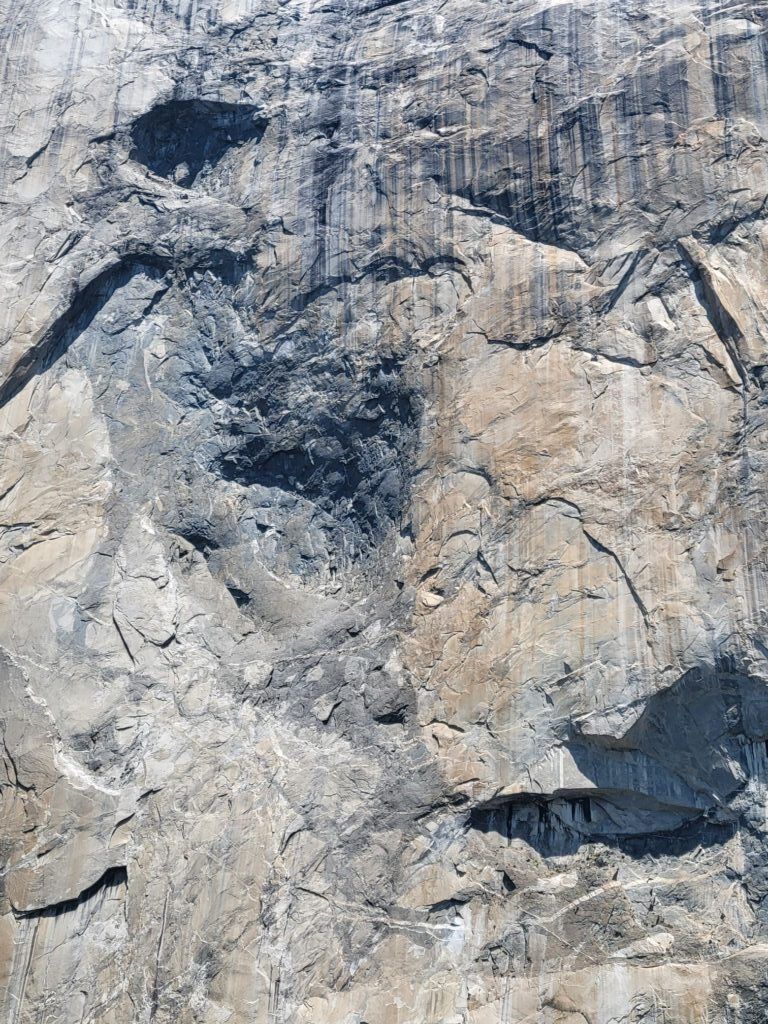
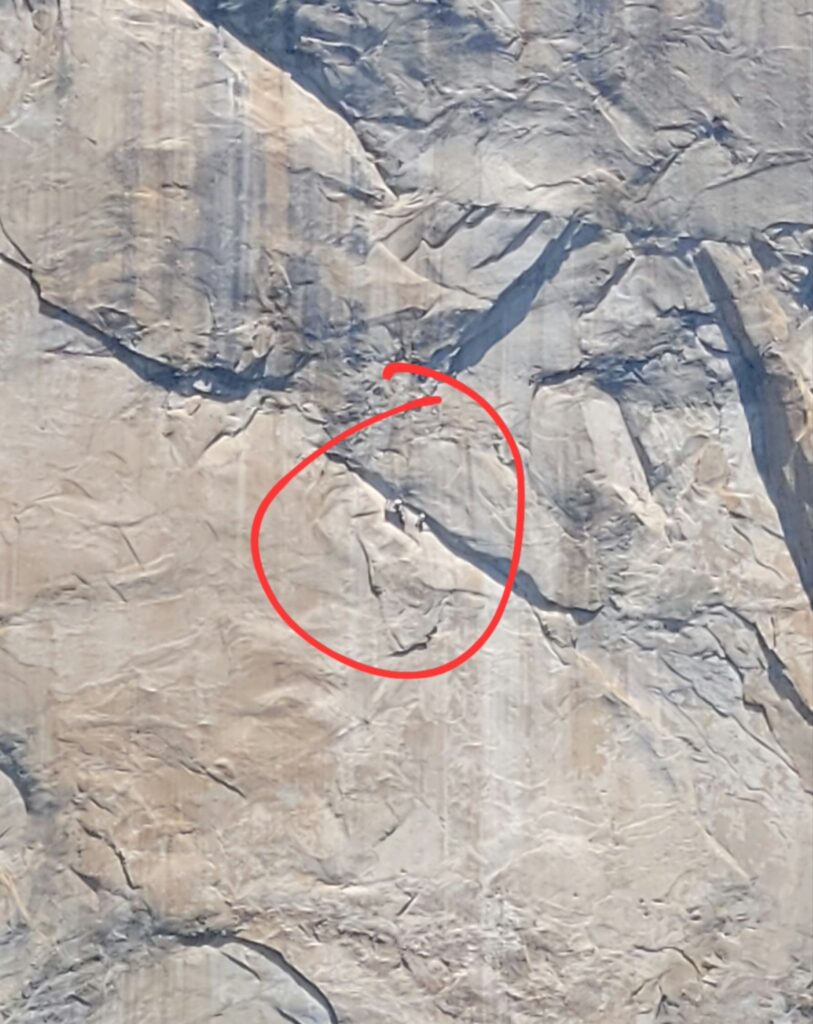
And things become even more exciting as you get up the valley walls!
The first 4 days of my backcountry permit were focused on seeing the valley from the top. You could also see most of this with only 1–2 days of easy backpacking.
The day my permit started, I took the morning Hikers Bus on the Tioga Road to start in Tuolumne Meadows, North of the valley and 1400 m higher in elevation. I cached my second week of food in a bear locker, hoped for the best, and headed towards the Sunrise Camp.
Sunrise Camp (Day 1), on the way back to the valley, has incredible views of the Cathedral Range, a group of sharp peaks, which barely stuck out of the huge Tuolumne Glacier about 1 million years ago.
Further South, Clouds Rest (Day 2) offers the best aerial views of the valley, where Half Dome seems to face El Capitán.
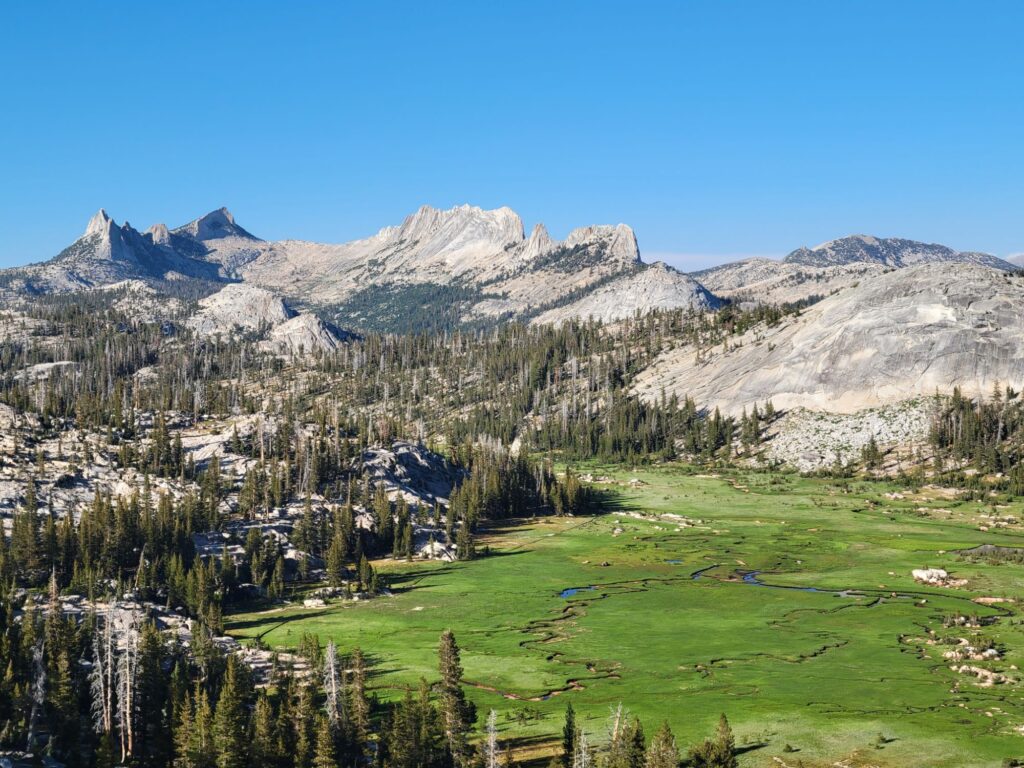

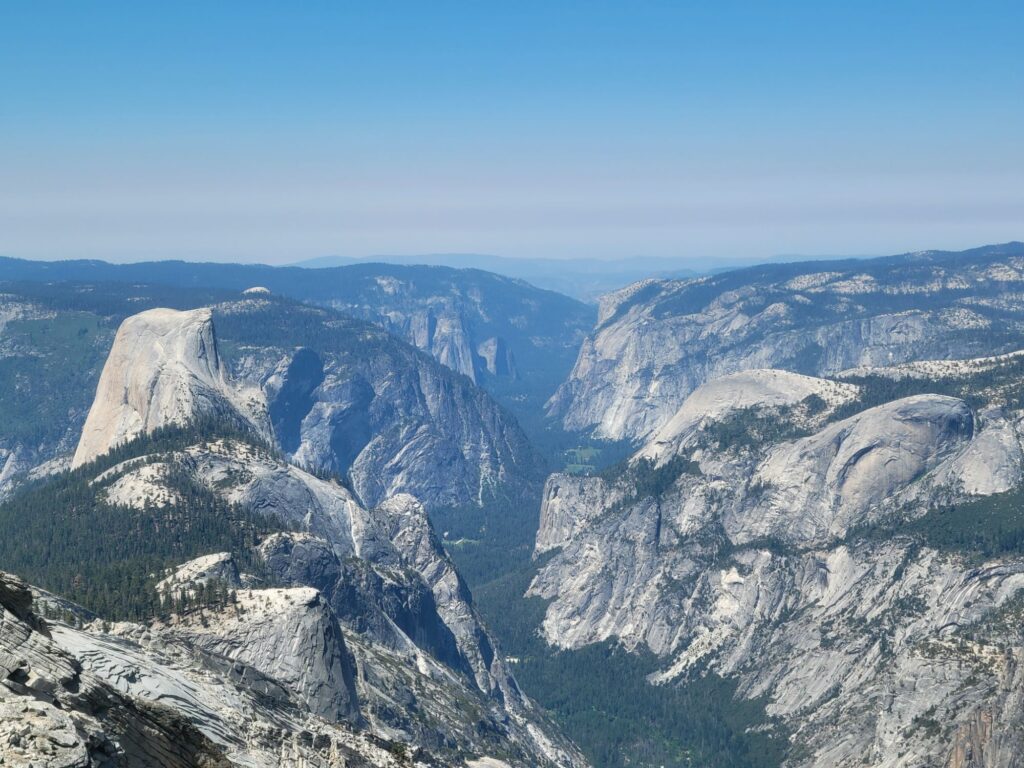

My permit allowed me to hike up Half Dome (Day 3) with the famous cable route. The craziest hike of my life. You have to pull yourself 120 meters up on metal cables at a 45° slope to reach the top. You drop the cable, you die.
After Half Dome, I had time to get down the first miles of the John Muir Trail with gorgeous views of the Nevada and Vernal Falls and chill out at the Emerald Pool, a huge water hole right between the two. What a combo for a single day!
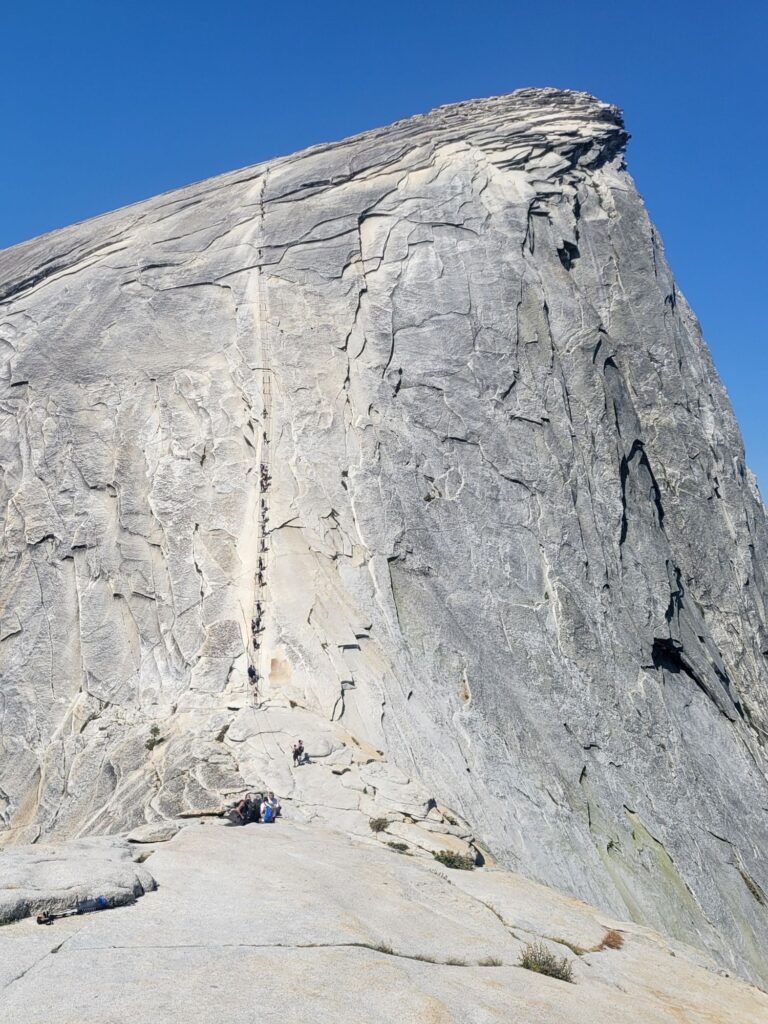
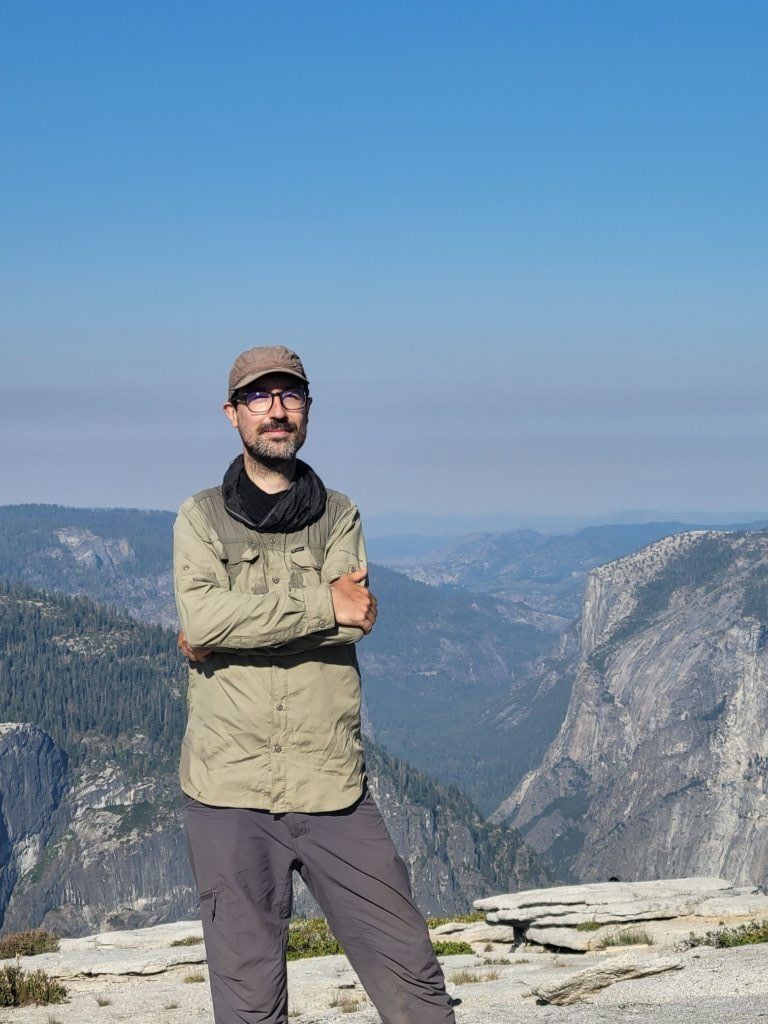
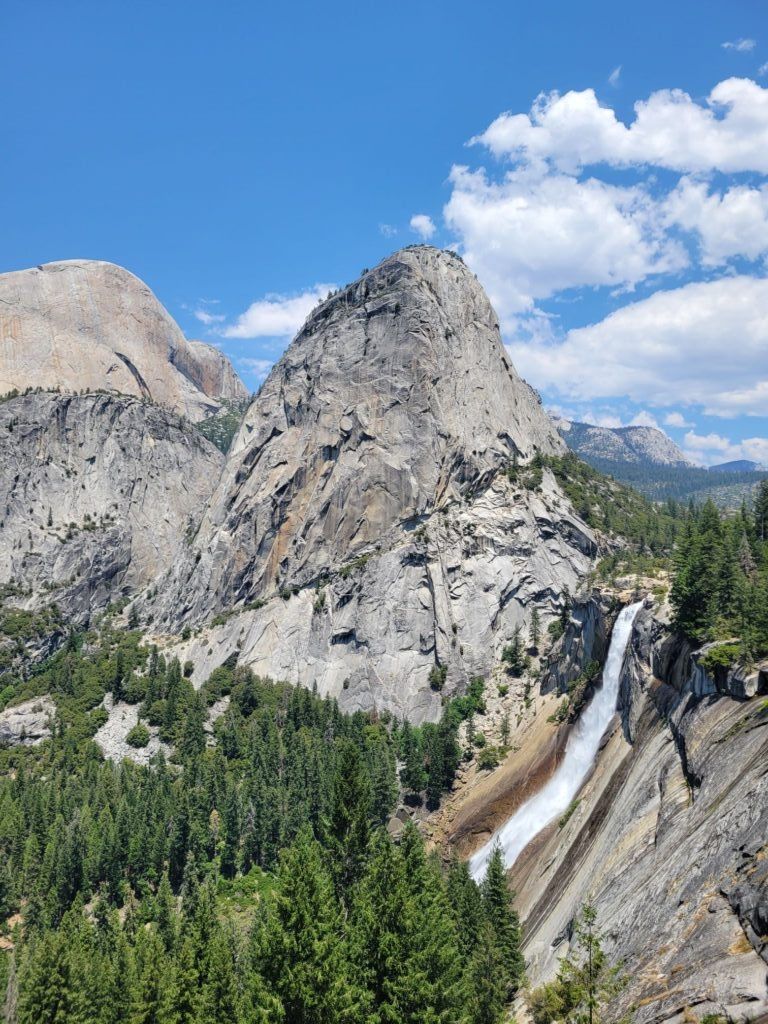
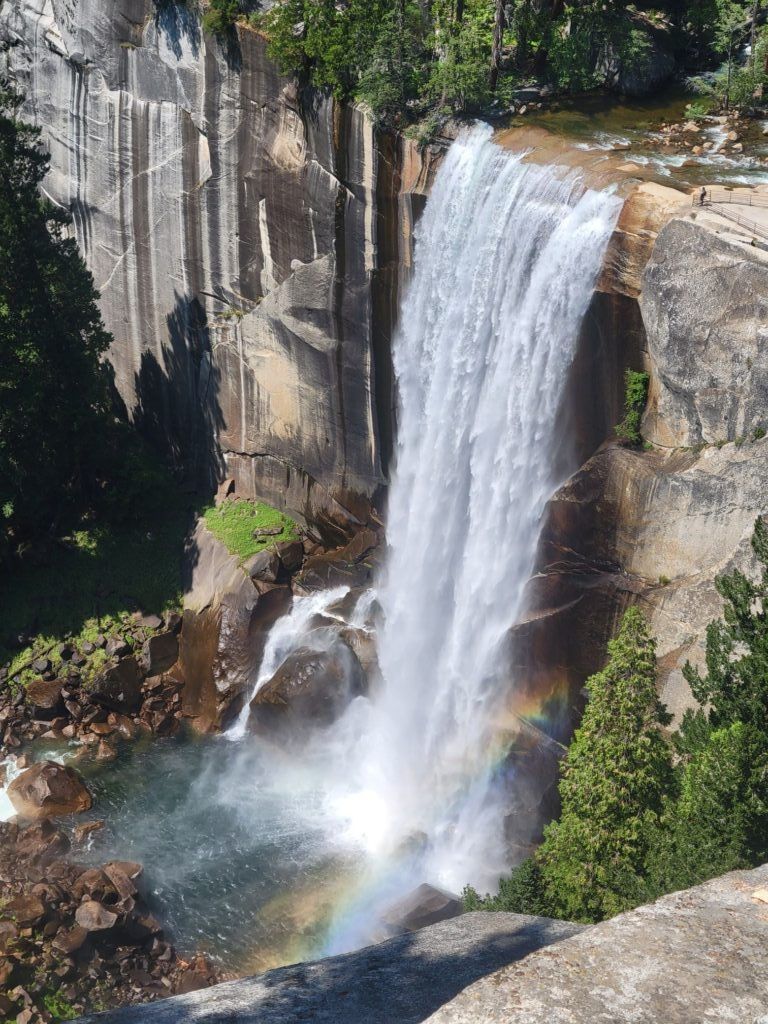
I finished my tour of the valley views reaching Glacier Point on the Panorama Trail (Day 4 and first photo). Then, I left the crowds to spend 11 more days in the backcountry, but that will be in the next episode…
In conclusion, all this famous Yosemite stuff is really worth it. It’s accessible without a car and much planning. Actually, it’s easier to make a last-minute trip to Yosemite if you arrive by bus and are ready to camp and hike a bit.
The backcountry permits are really flexible. There is a daily quota for each trailhead, but usually several options to get to the same places. In practice, only where you camp the first night matters. After that, you are free to roam the 3000 km² of the park as long as you want. I went to get my permit at the Wilderness Center together with 2 PCT hikers who wanted to hike Half Dome. Only 2 other people were in line before 8:00. The PCT hikers got an ideal “walk up” permit (40% of the quota) on the spot.
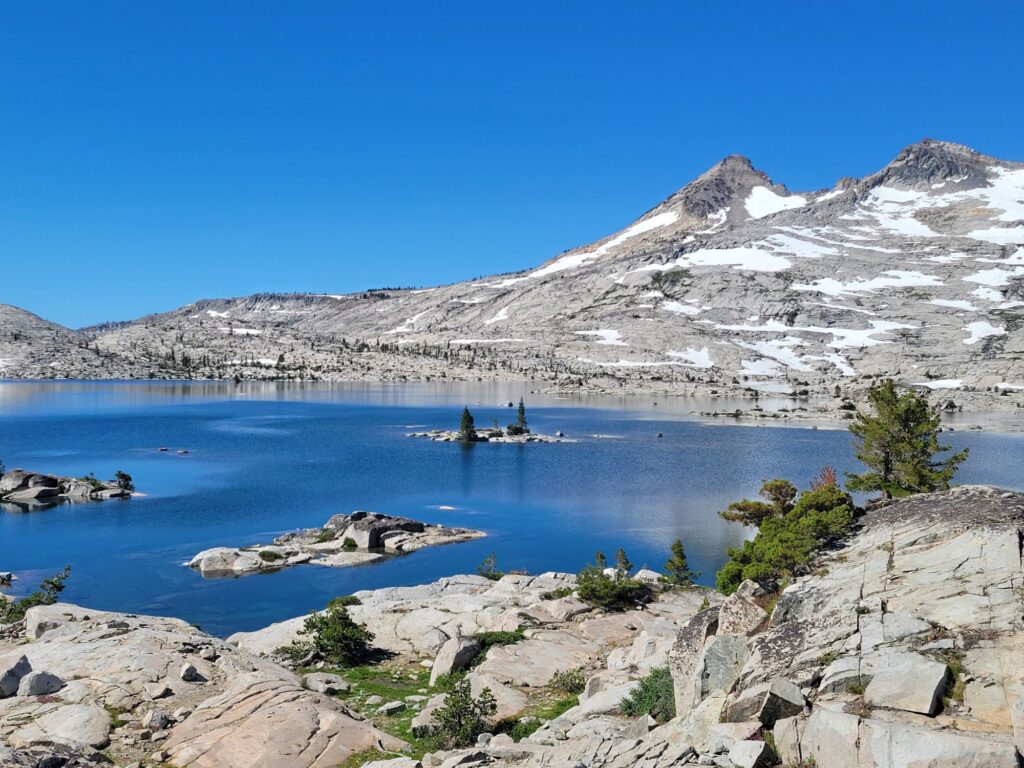
On the West side of Lake Tahoe lies the Crystal Range, a different geologic slice of the same granite cake. This side also gets most of the water coming from the Pacific Ocean. As a result, the landscape is full of desolate glaciar valleys, turquoise lakes, polished granite slabs, streams of melting snow, and ancient pines.
It’s also more popular, and, here, the Tahoe Rim Trail overlaps with the Pacific Crest Trail, which goes from Mexico to Canada, so it was a bit too crowded for me sometimes. But, apparently, even bears are fine with that…
All-in-all, the Tahoe Rim Trail is a great and easy trail for 2 weeks (20 km/d), with beautiful and diverse landscapes. In an average snow year, start in the second half of June on the East side to avoid heat and water issues. Even with patches of snow, the moderate slopes (5% average) won’t be dangerous. Take advantage of the free buses to reach the trailhead and resupply.
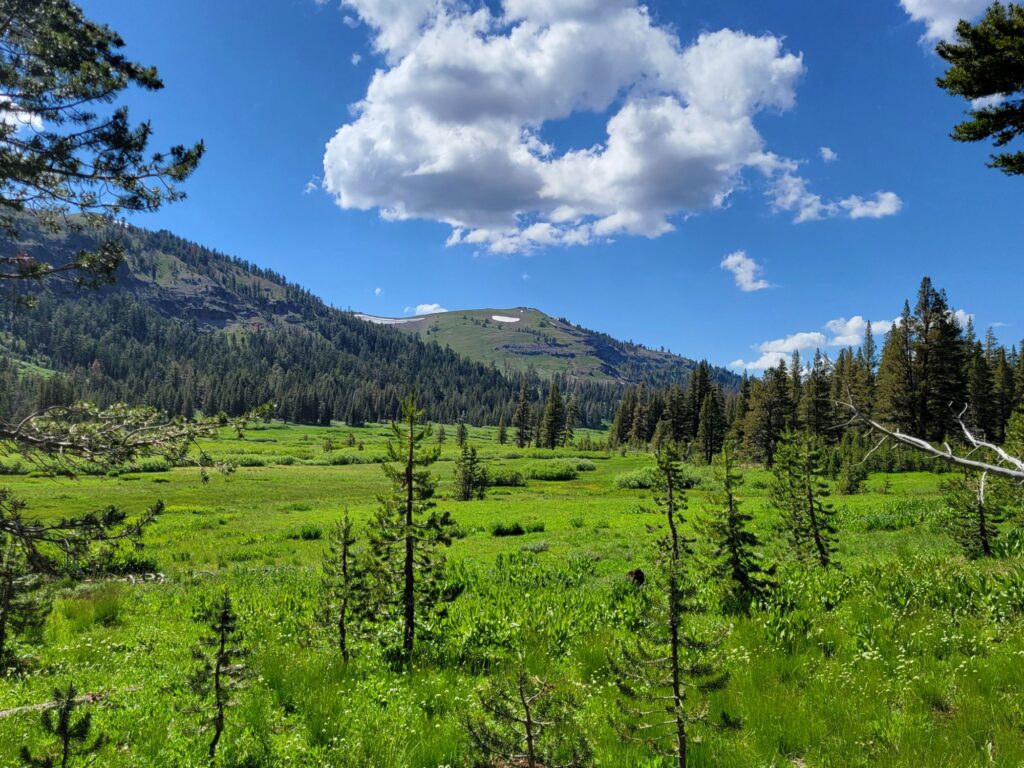
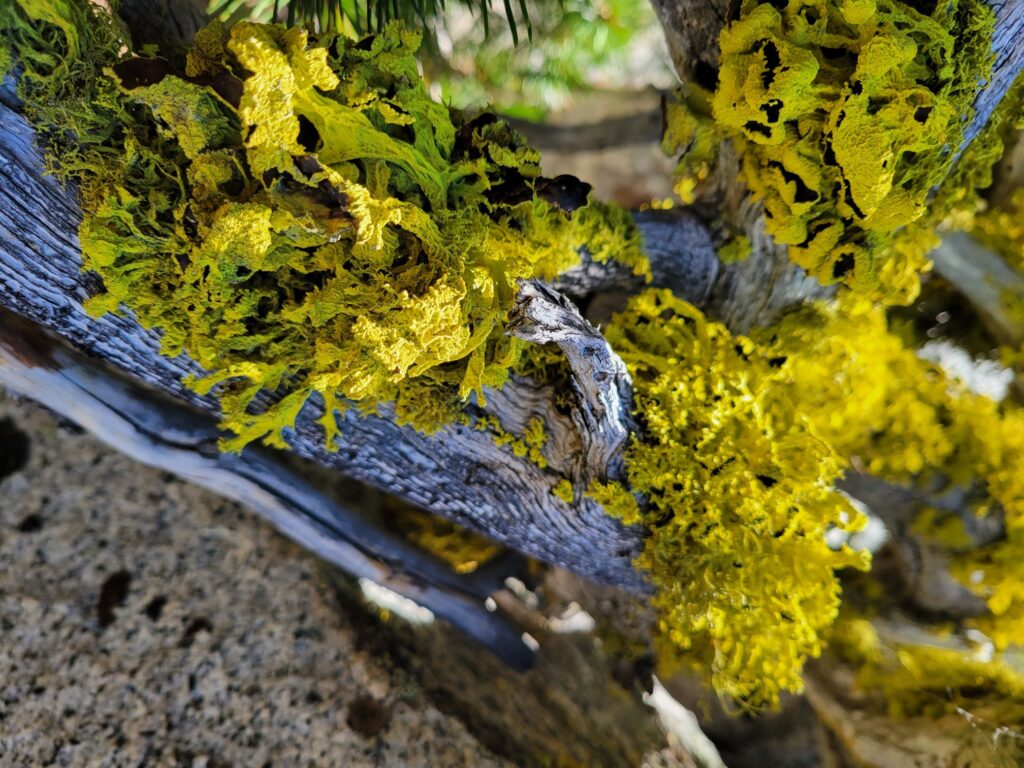
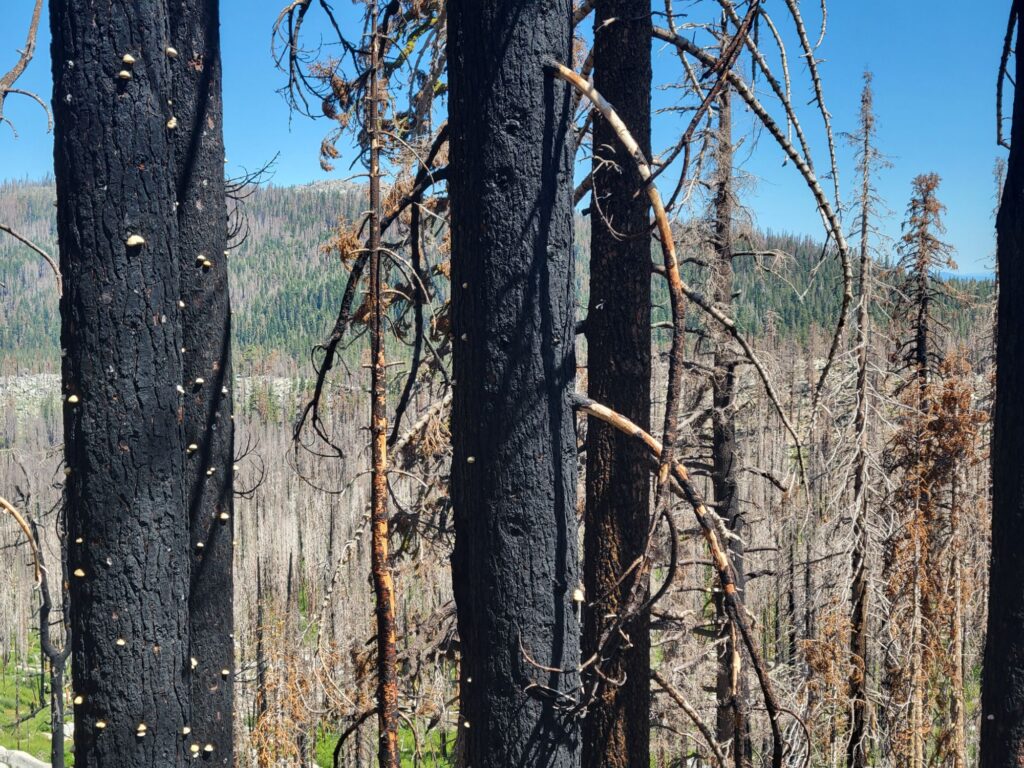
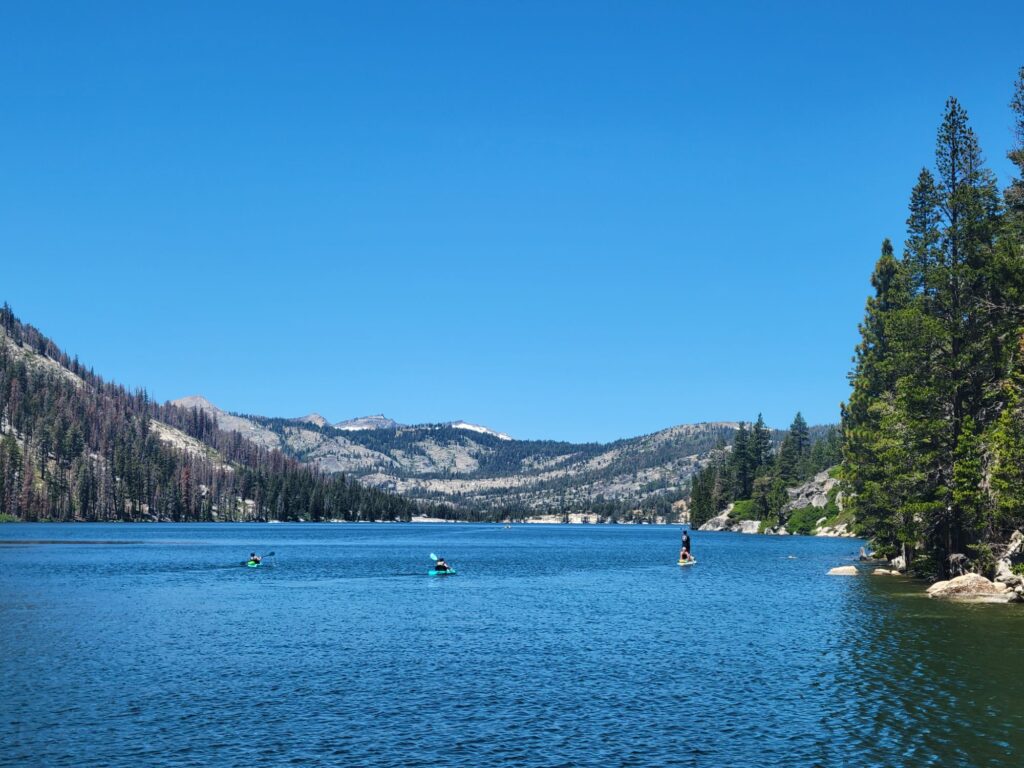

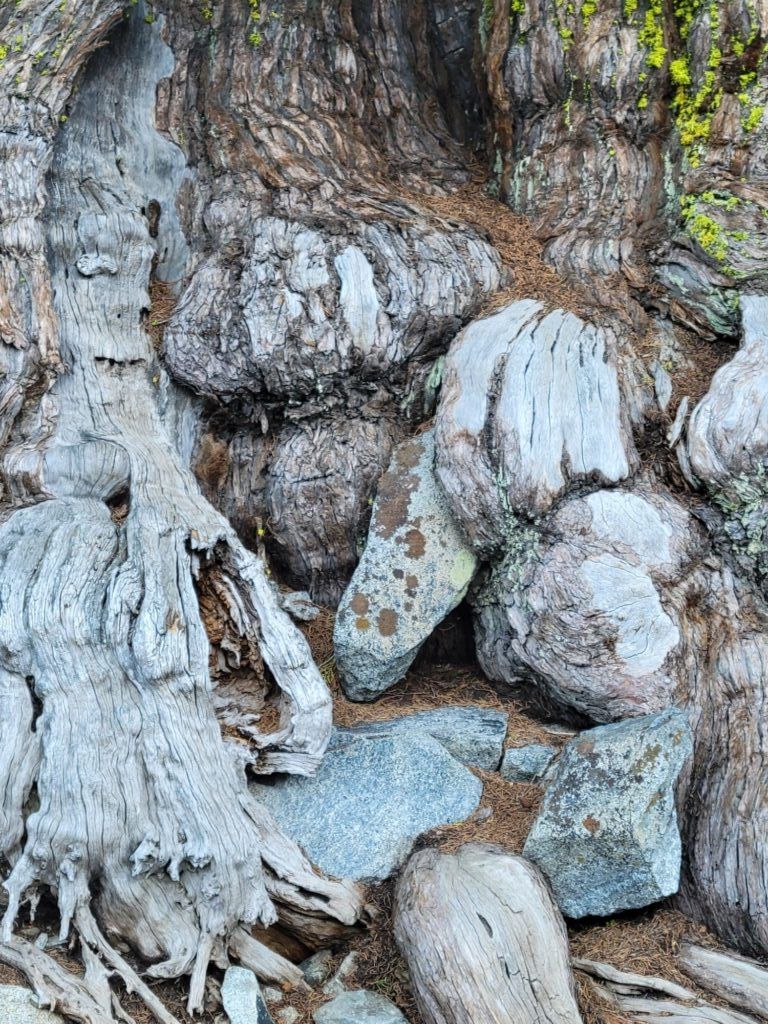
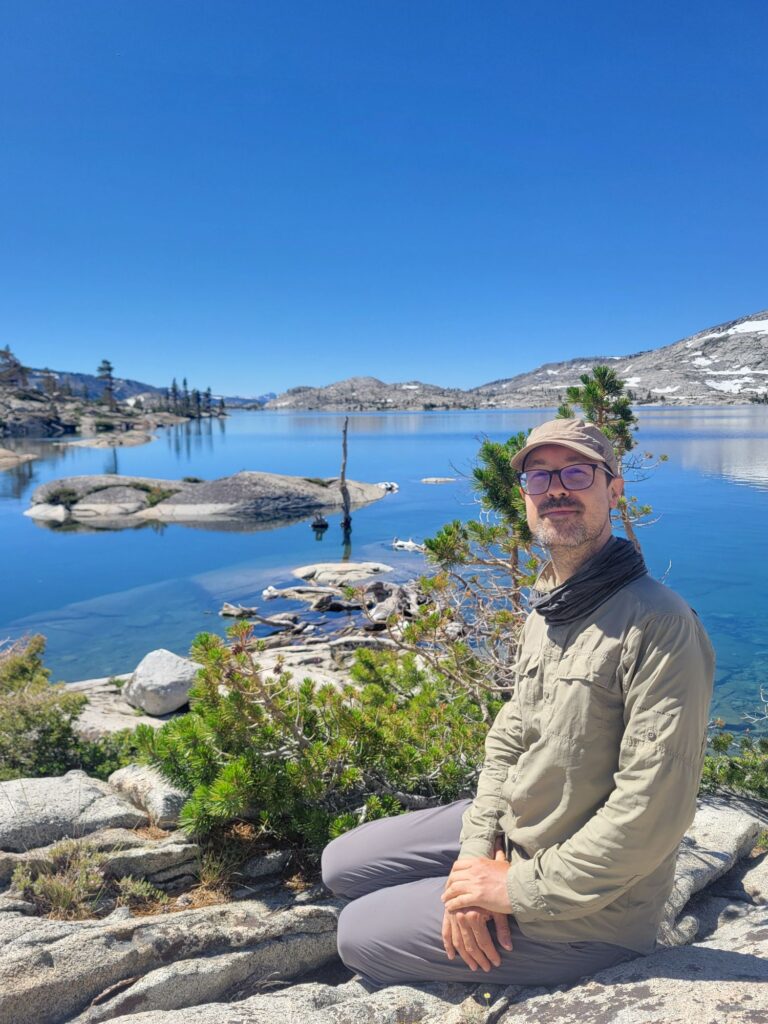
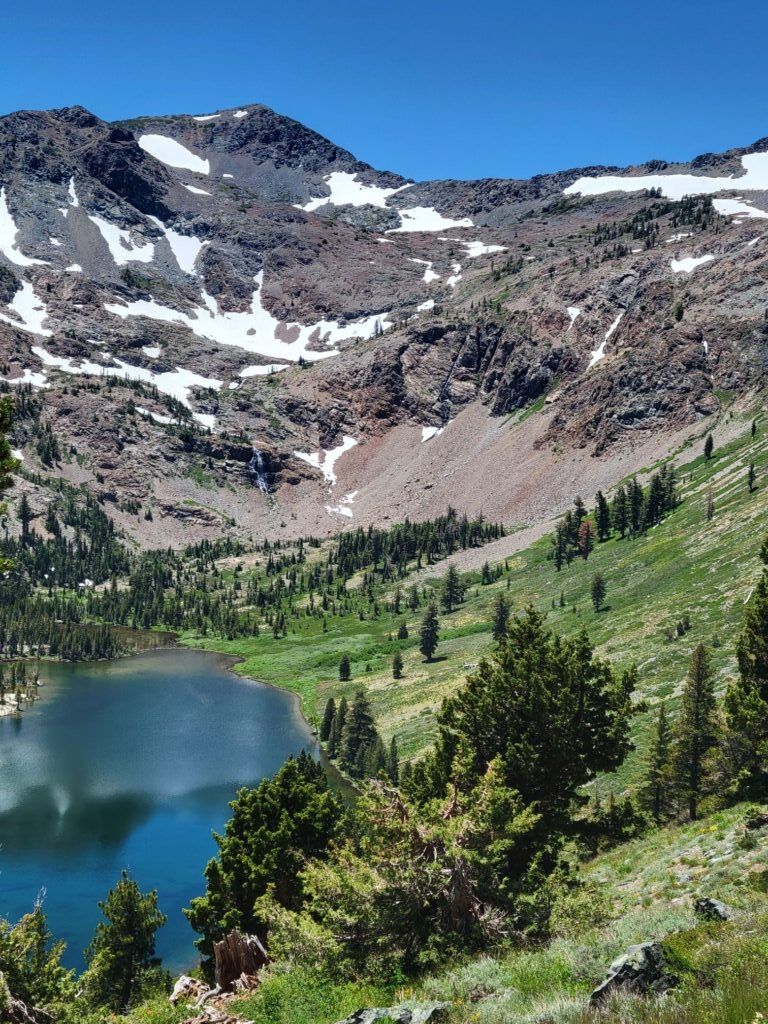
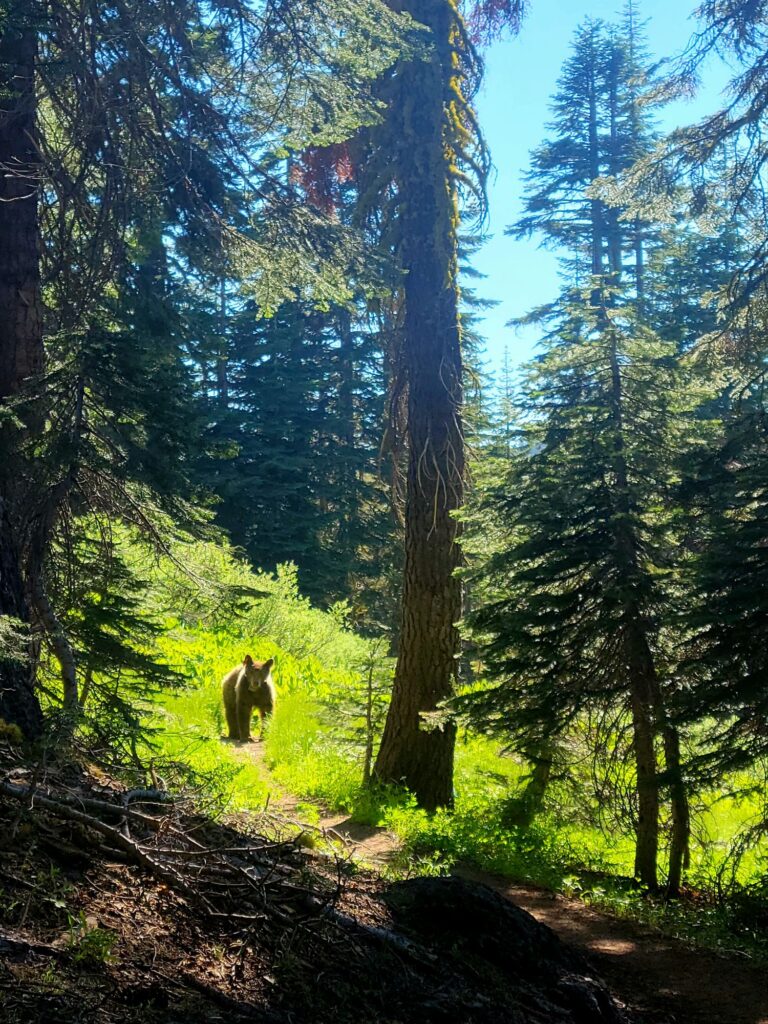
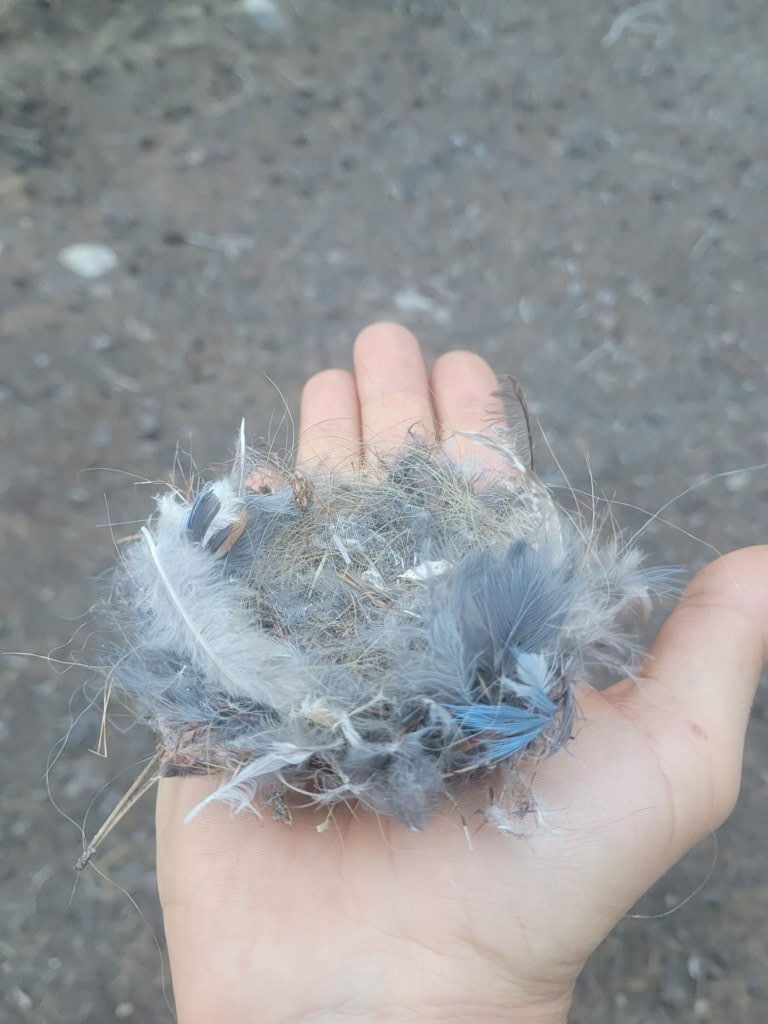
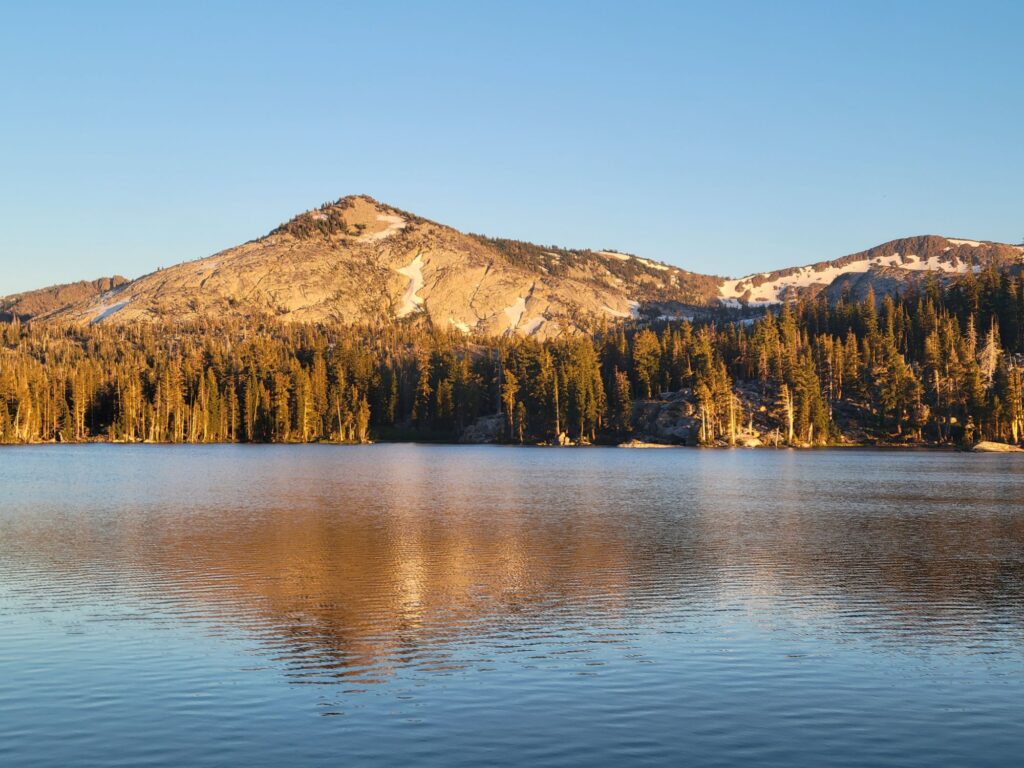
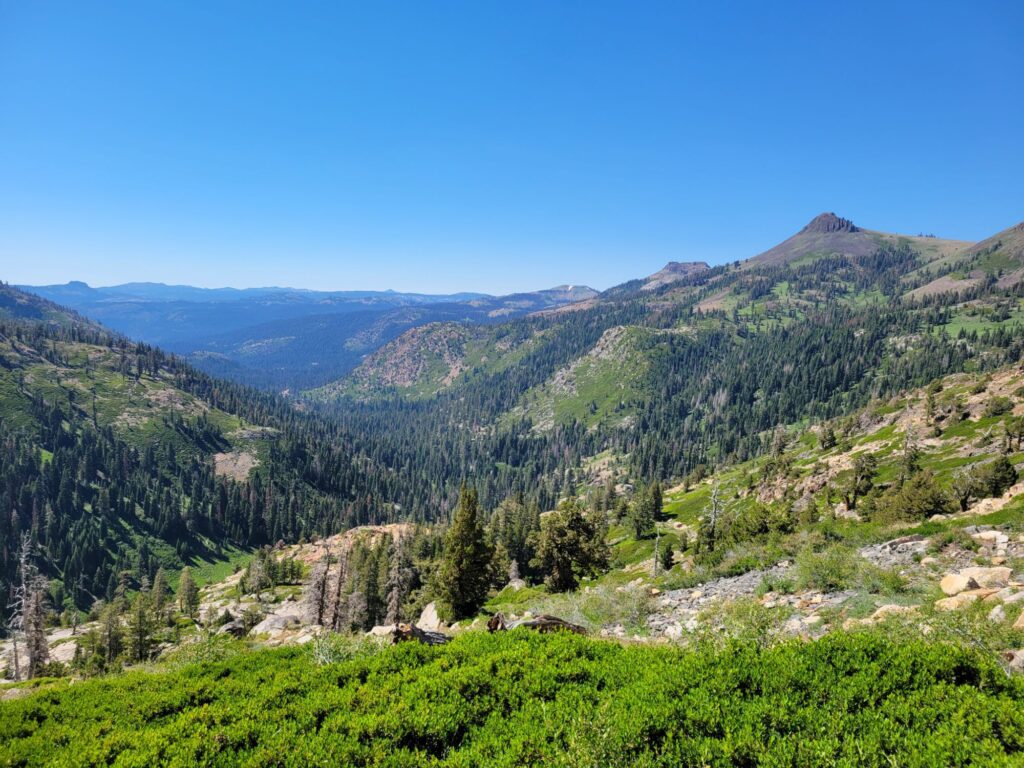

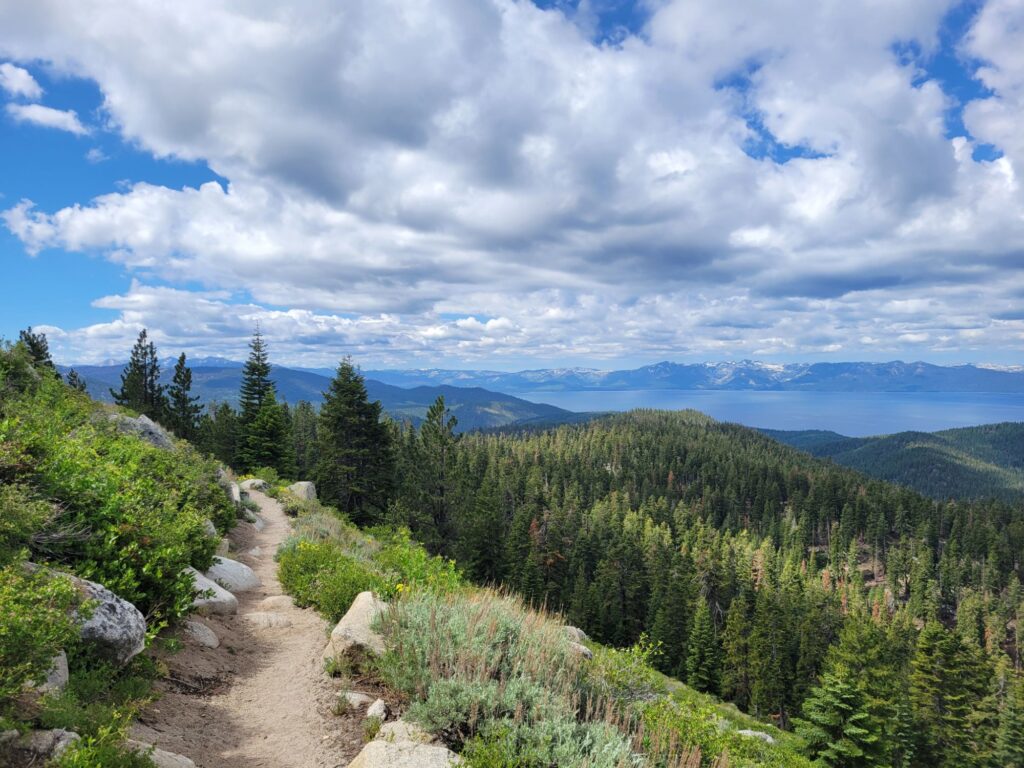
I had a great time in my first week on the Tahoe Rim Trail. I was surprised by the beauty of its contrast.
The hardest part was to get on the trail! On Day 1, I had to walk 10 extra km and pass by 9 private bridges with “No Trepassing” signs before being able to cross the Truckee River.
Then, I didn’t see a house or a gate for the next 130 km. The trail followed the East side of the lake rim along the Carson Range in Nevada, mostly between 2100 m and 2700 m and without much slope.
The dry and sparce forests on white decomposed granite contrasted with the lush meadows full of life at the lower passes and the highland chaparral full of wild flowers and Mountain Pennyroyal mint.
No bears in sight, but super cute chipmunks and birds ranging from big hawks to the stunning Mountain Bluebird and even a Calliope Hummingbird.
That’s the dry side of the Sierra with stretches of up to 26 km without reliable water source on the trail. I hit the sweet spot in terms of calendar and had some extra sources (including snow patches), which made this water game fun and tactical. A few weeks later, it would have been painful. Lots of sun, but lots of shade too, and mild temperatures.
The trail was really not crowded except near highways. There was good gender parity among backpackers (17 men and 14 women), even though women traveled more in pairs than alone. Most people traveled in pairs anyway (65%).
